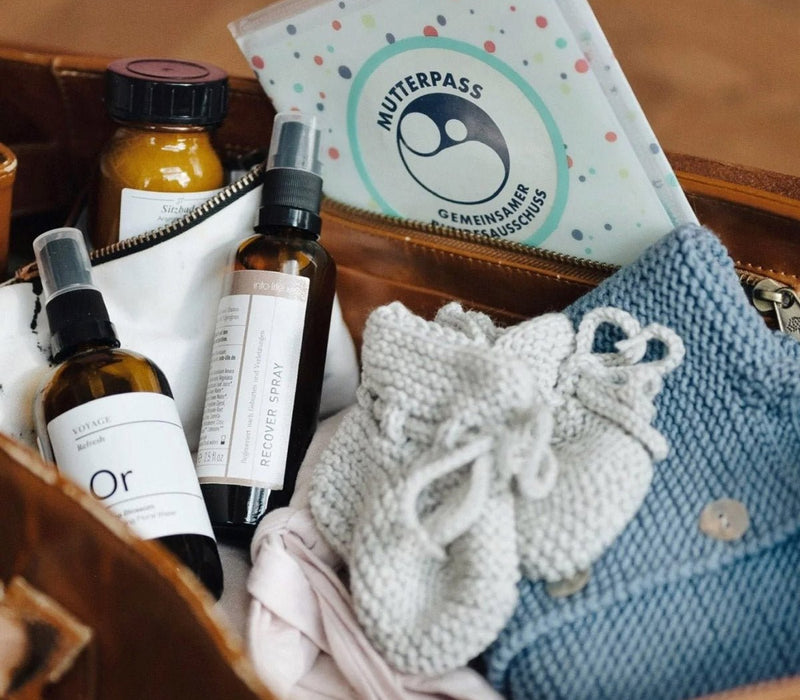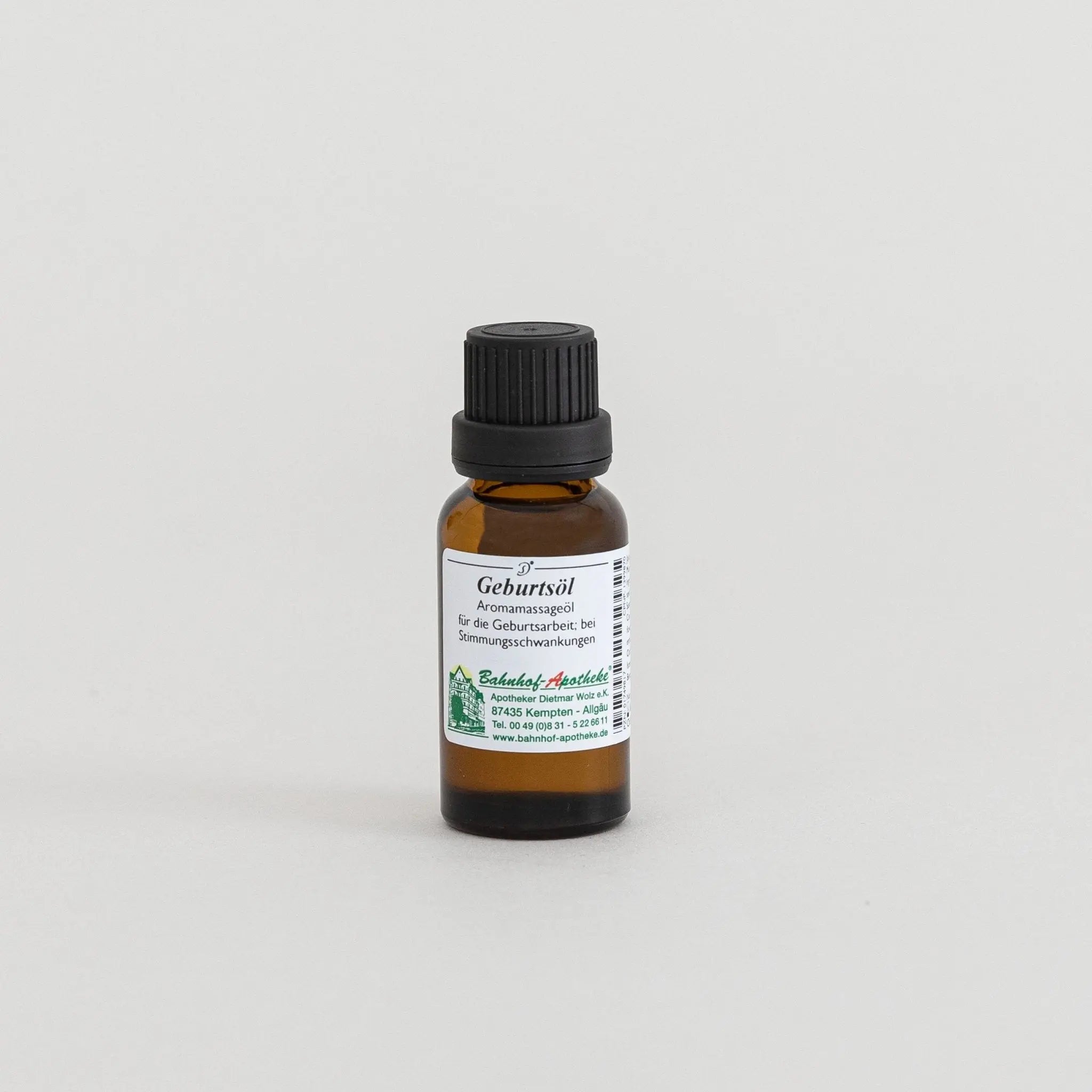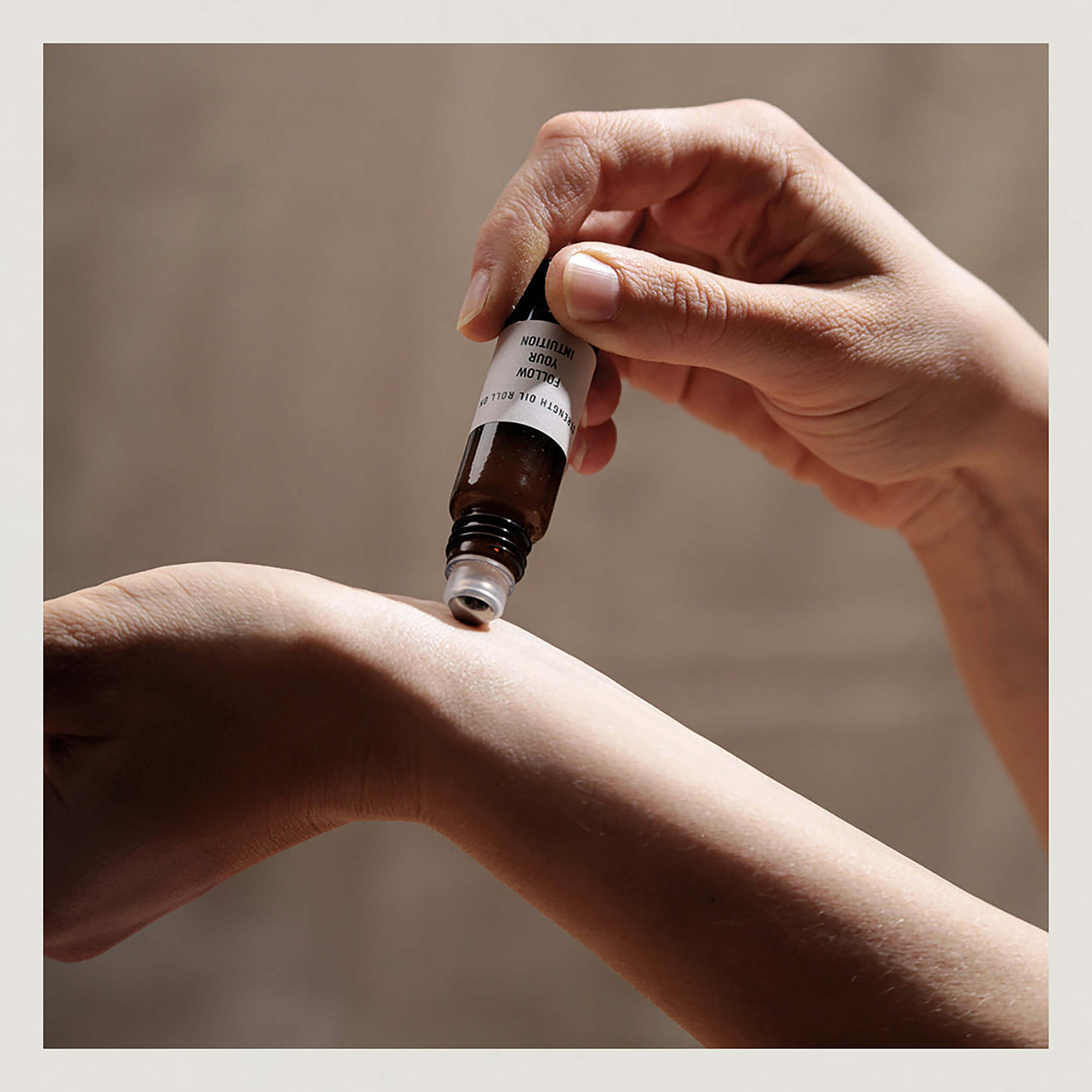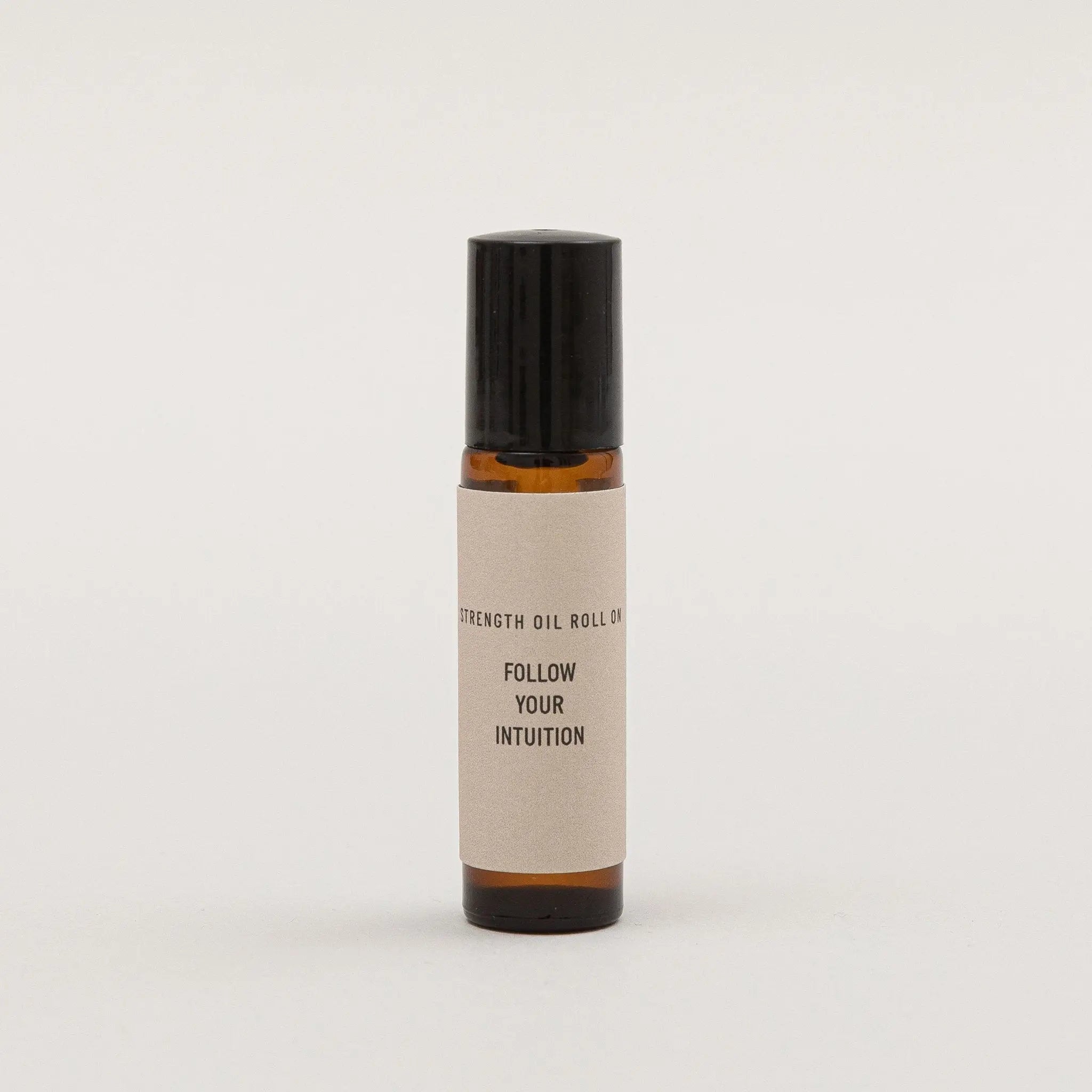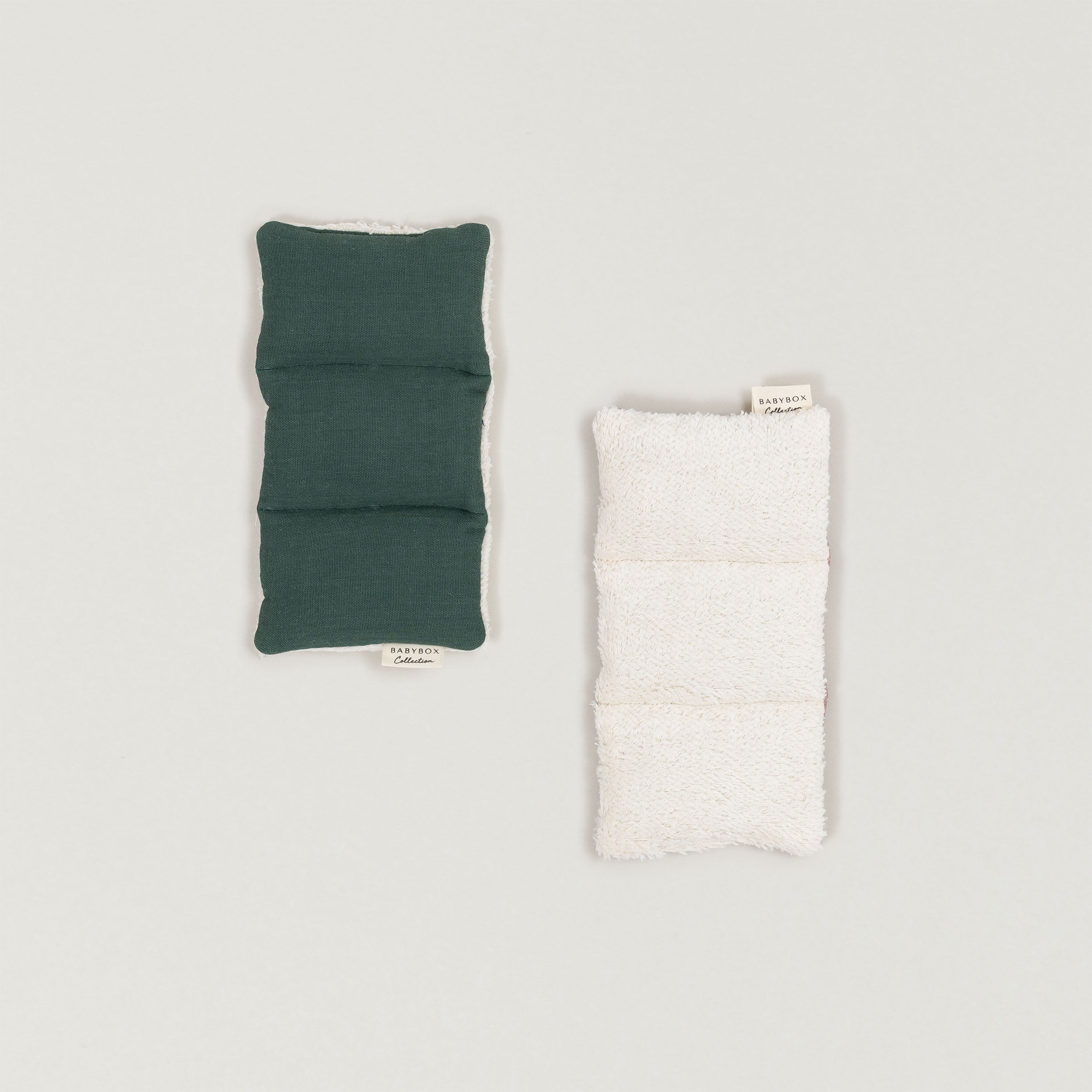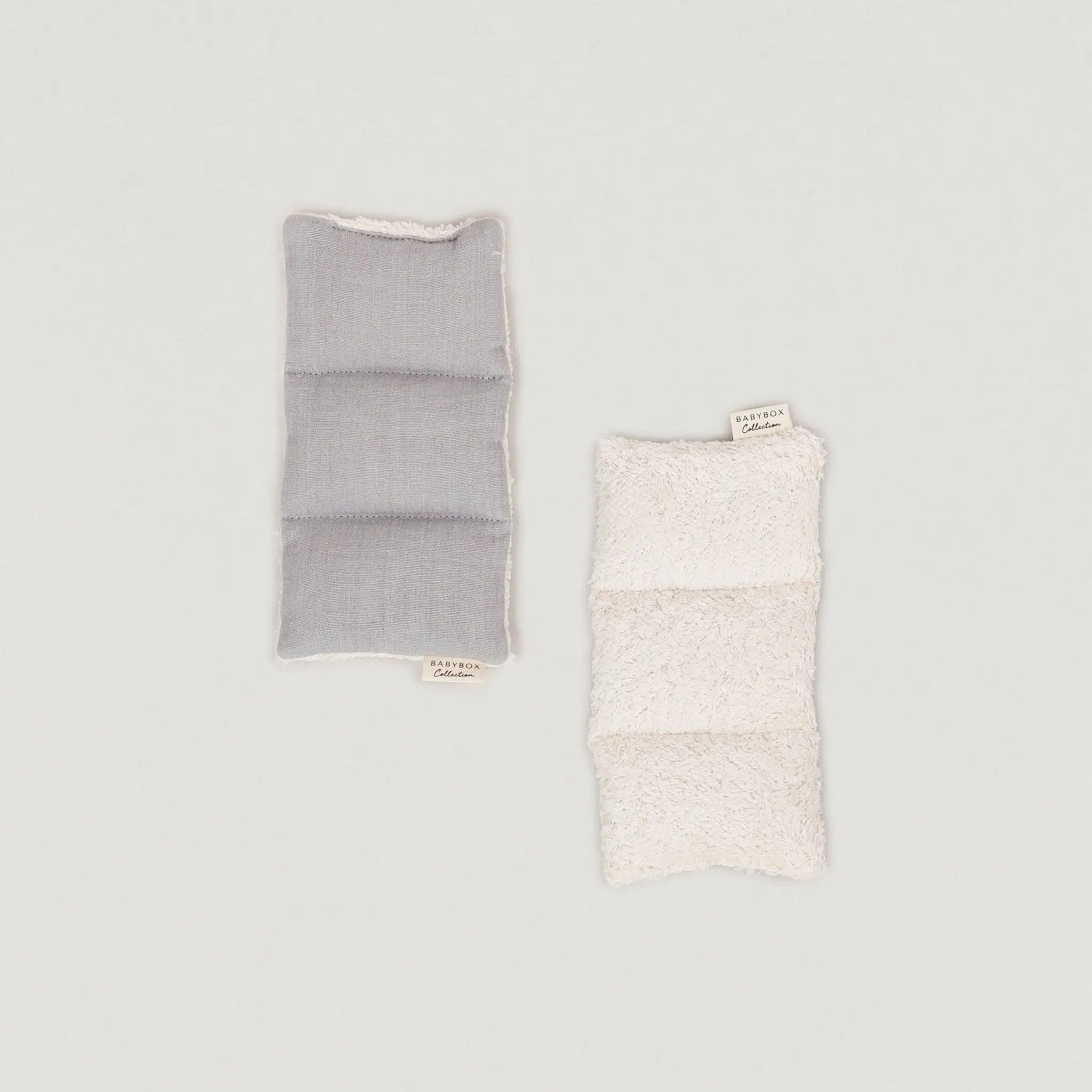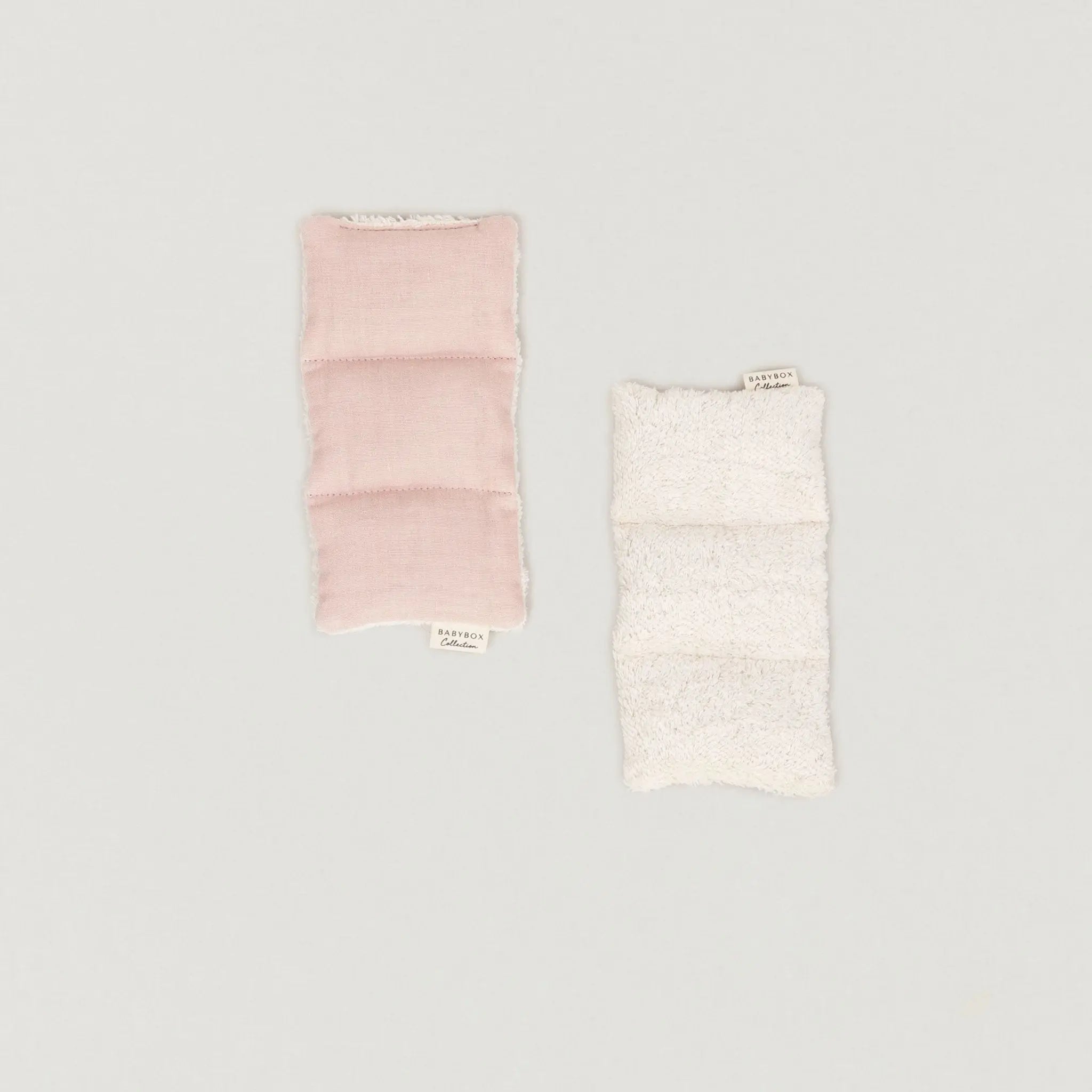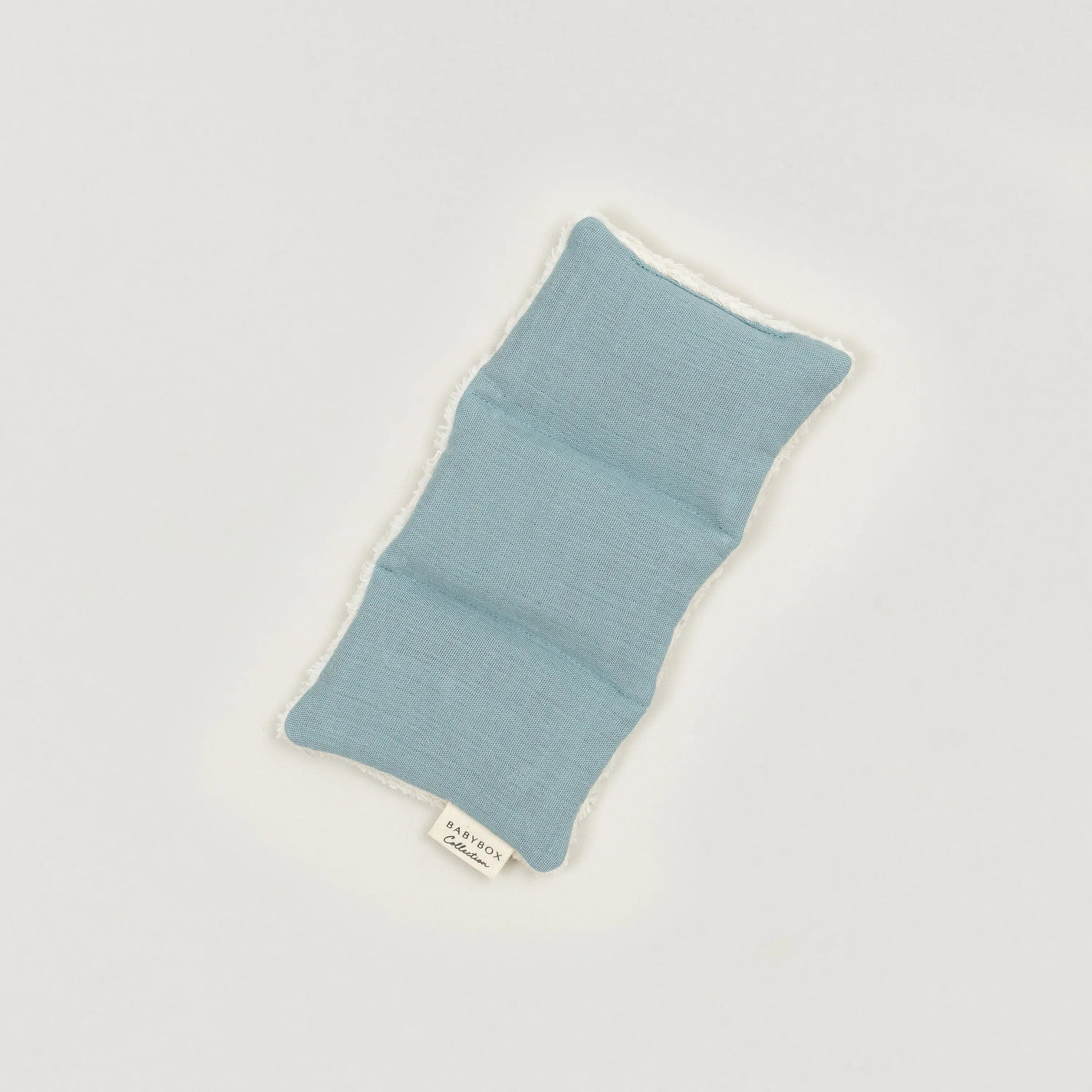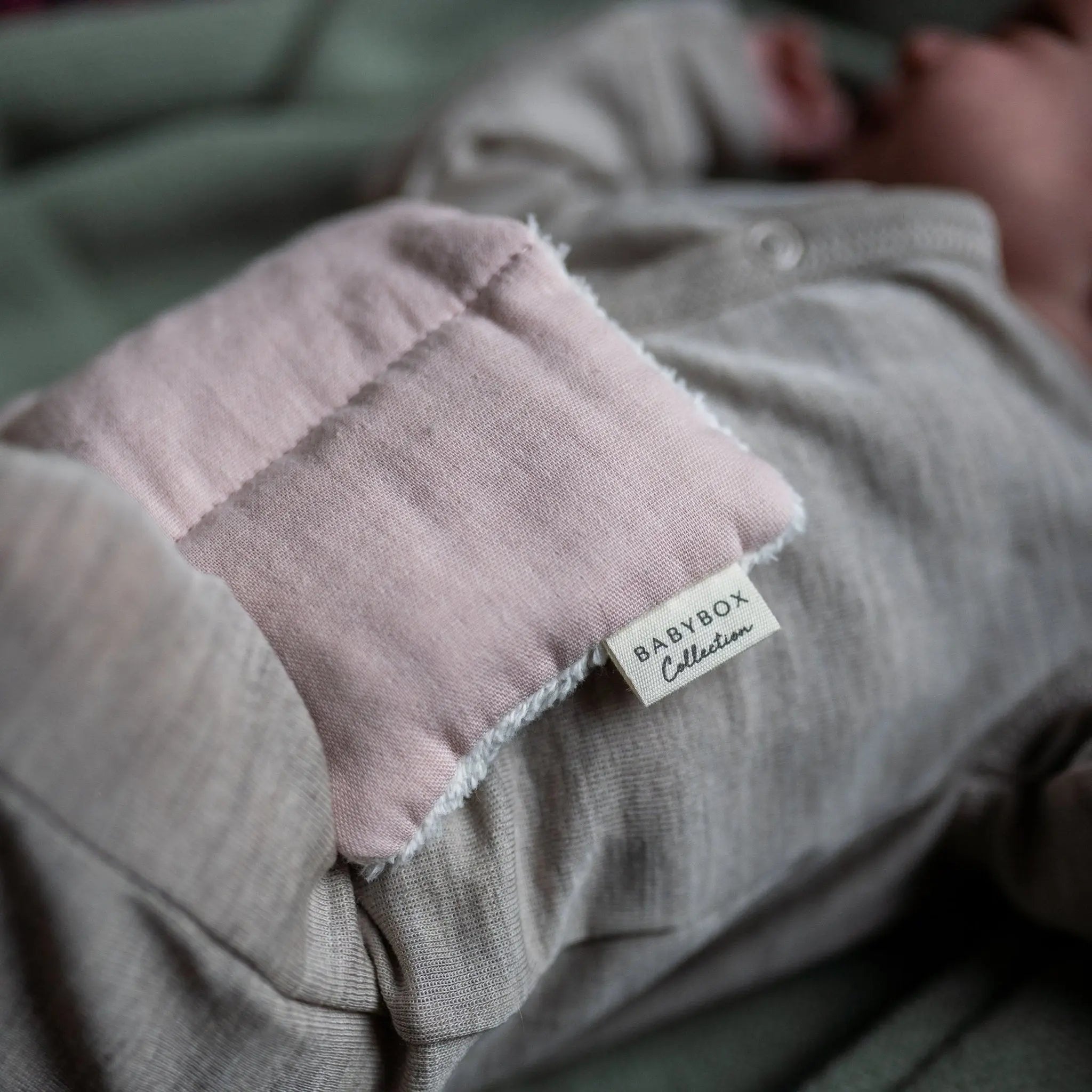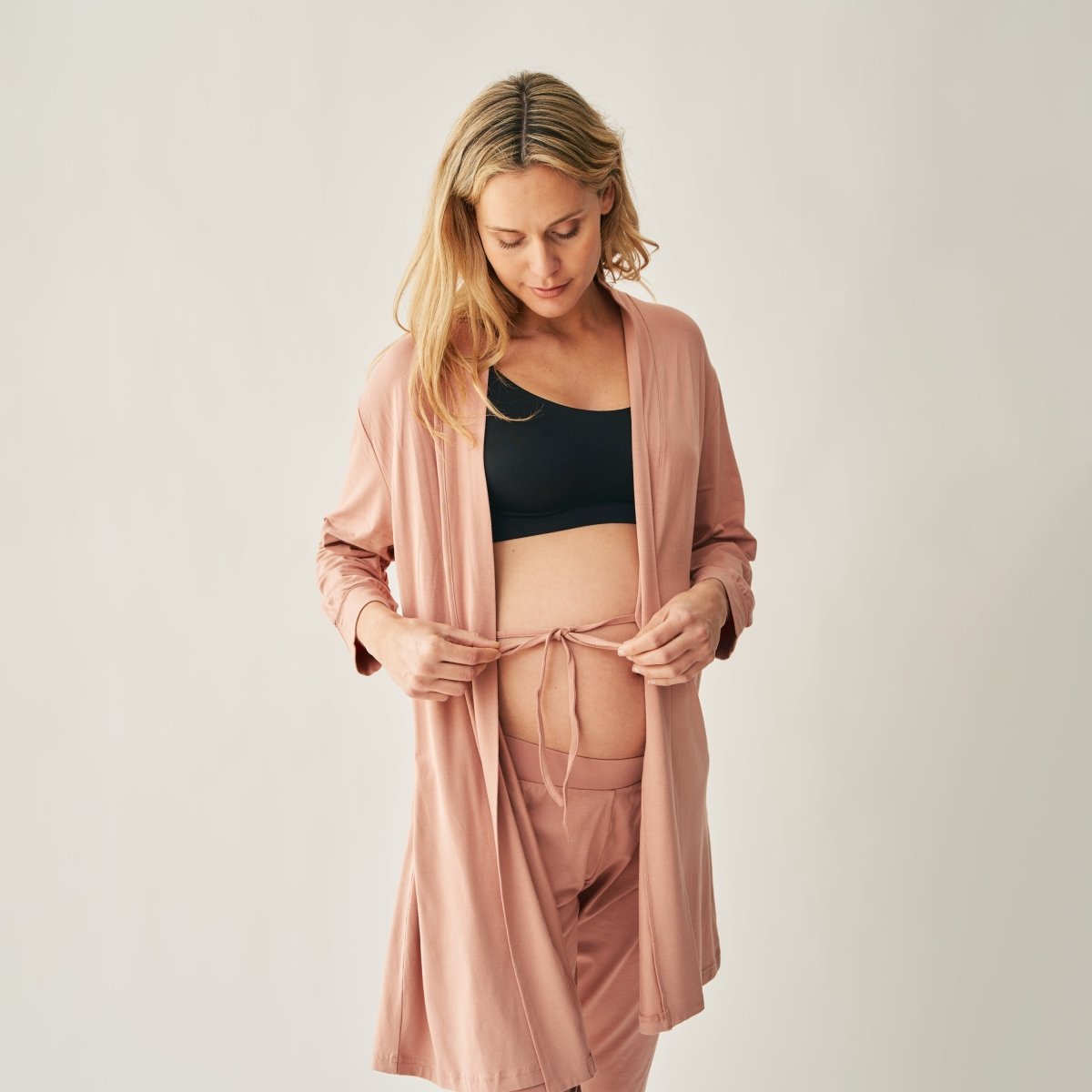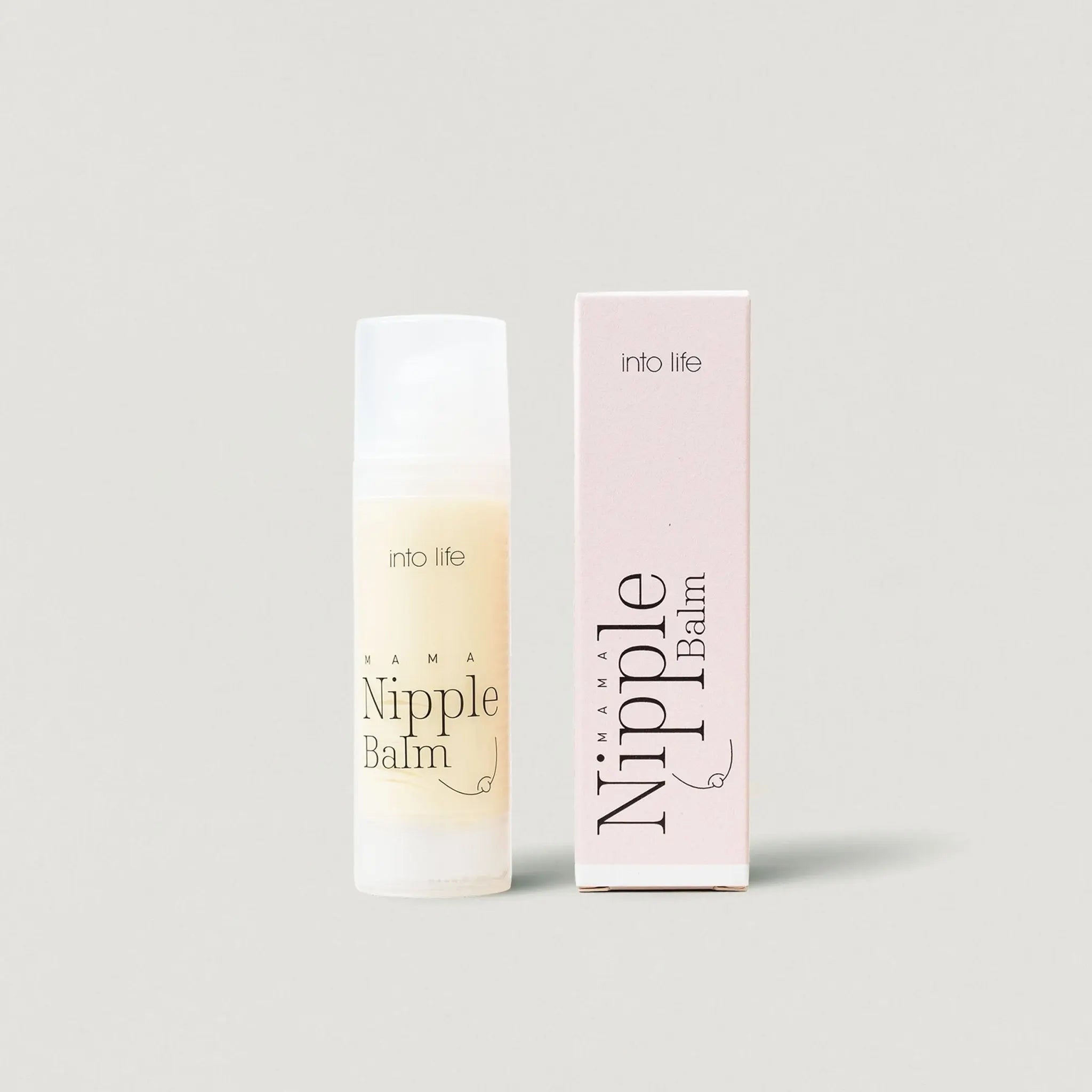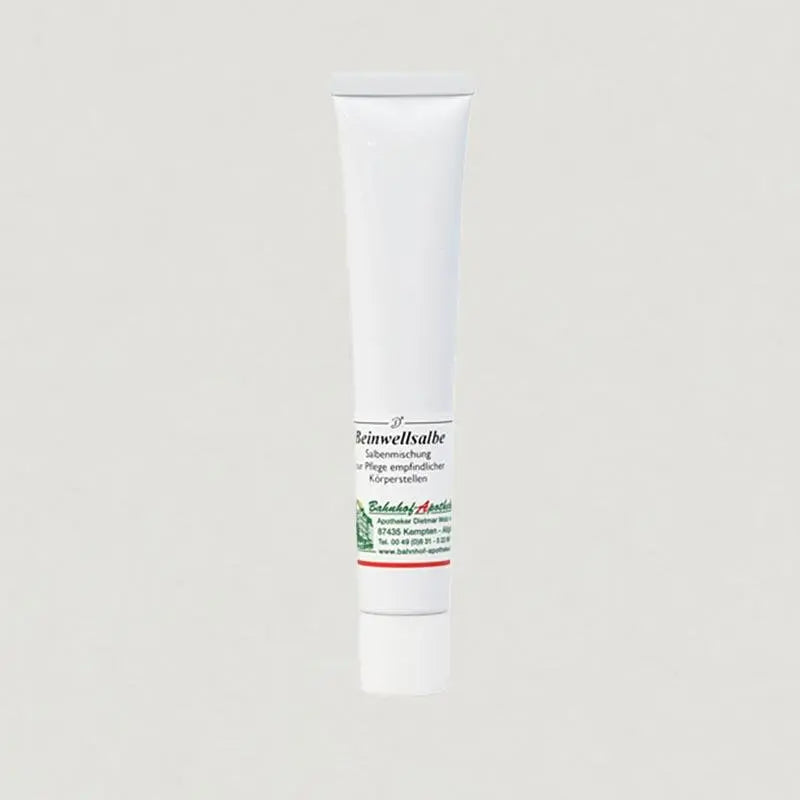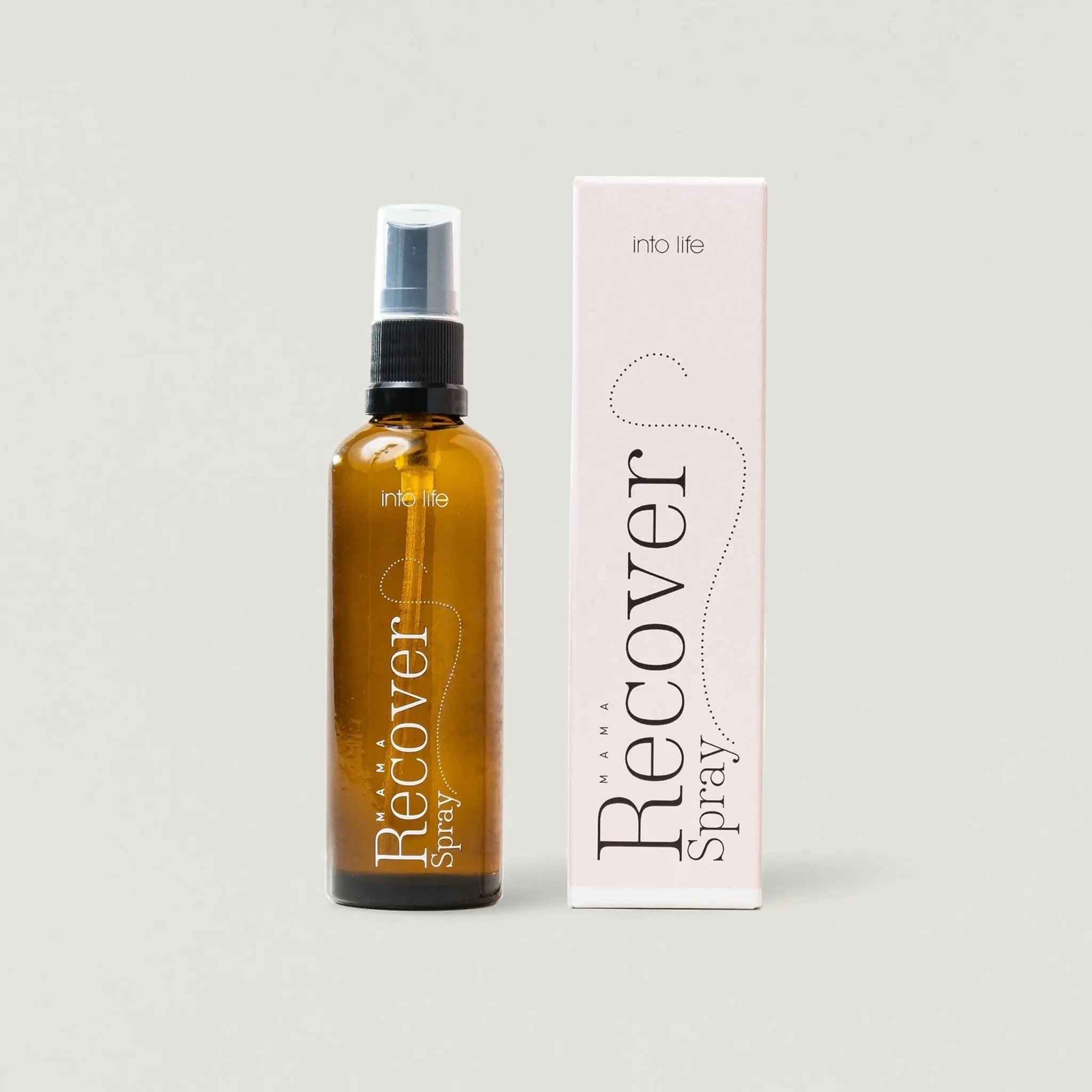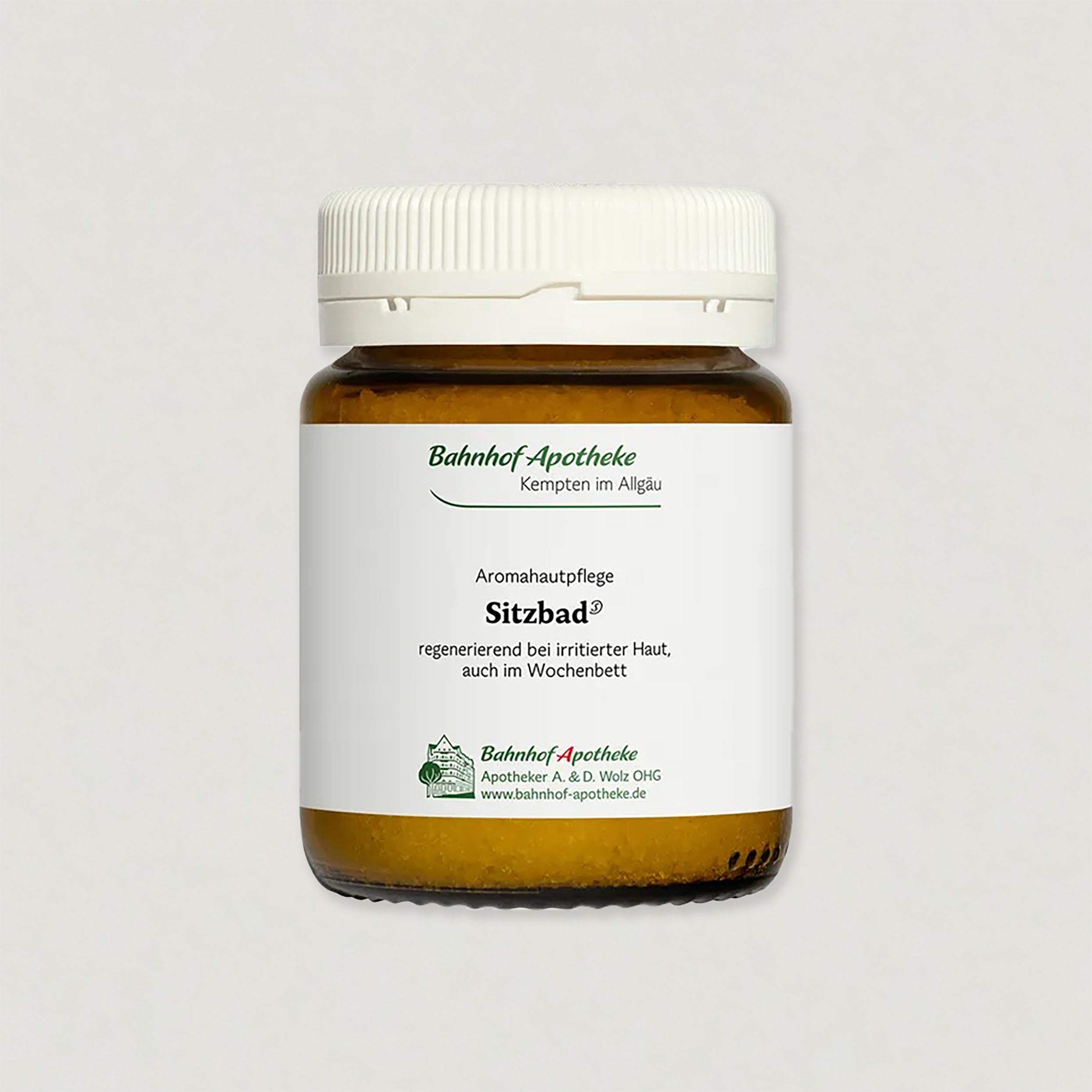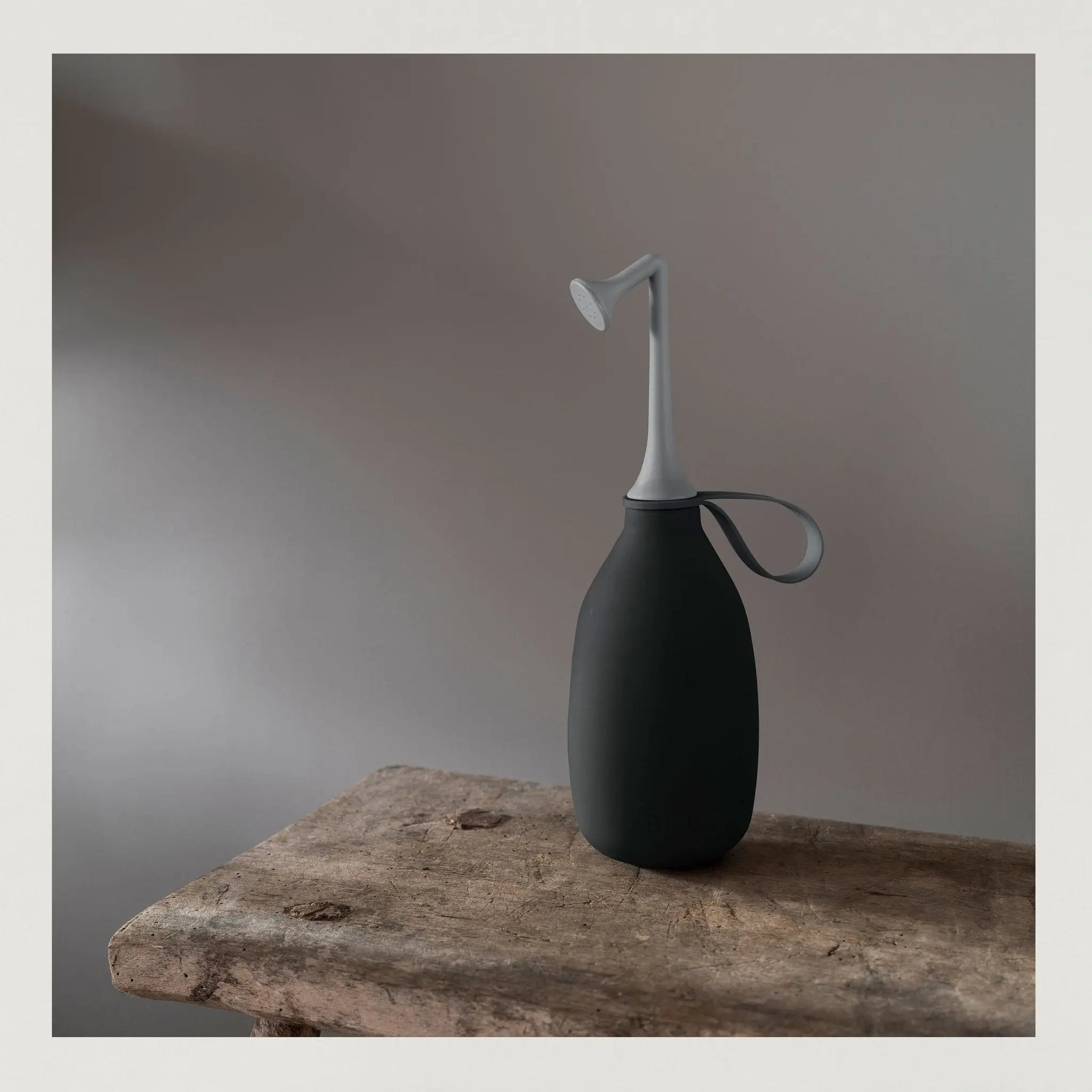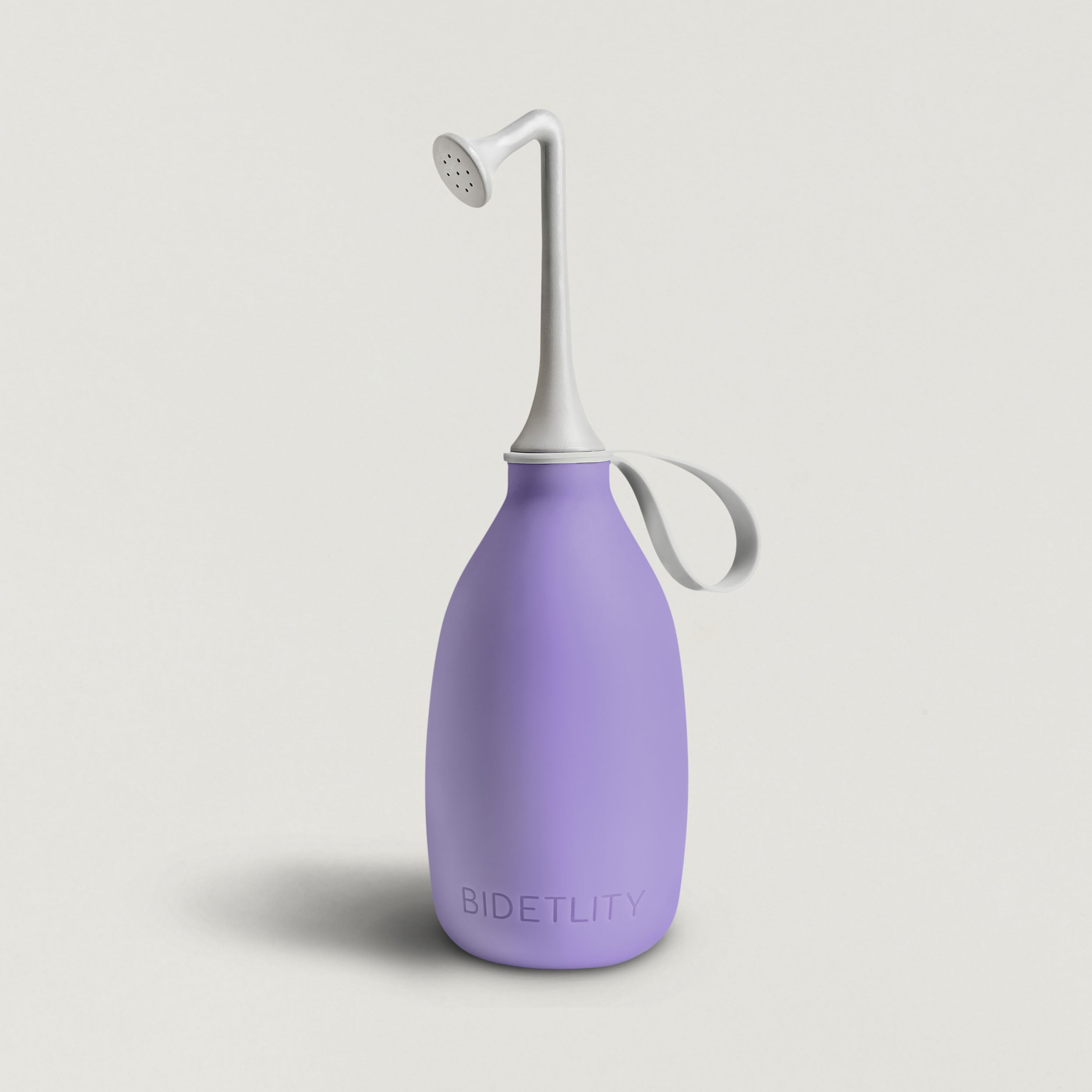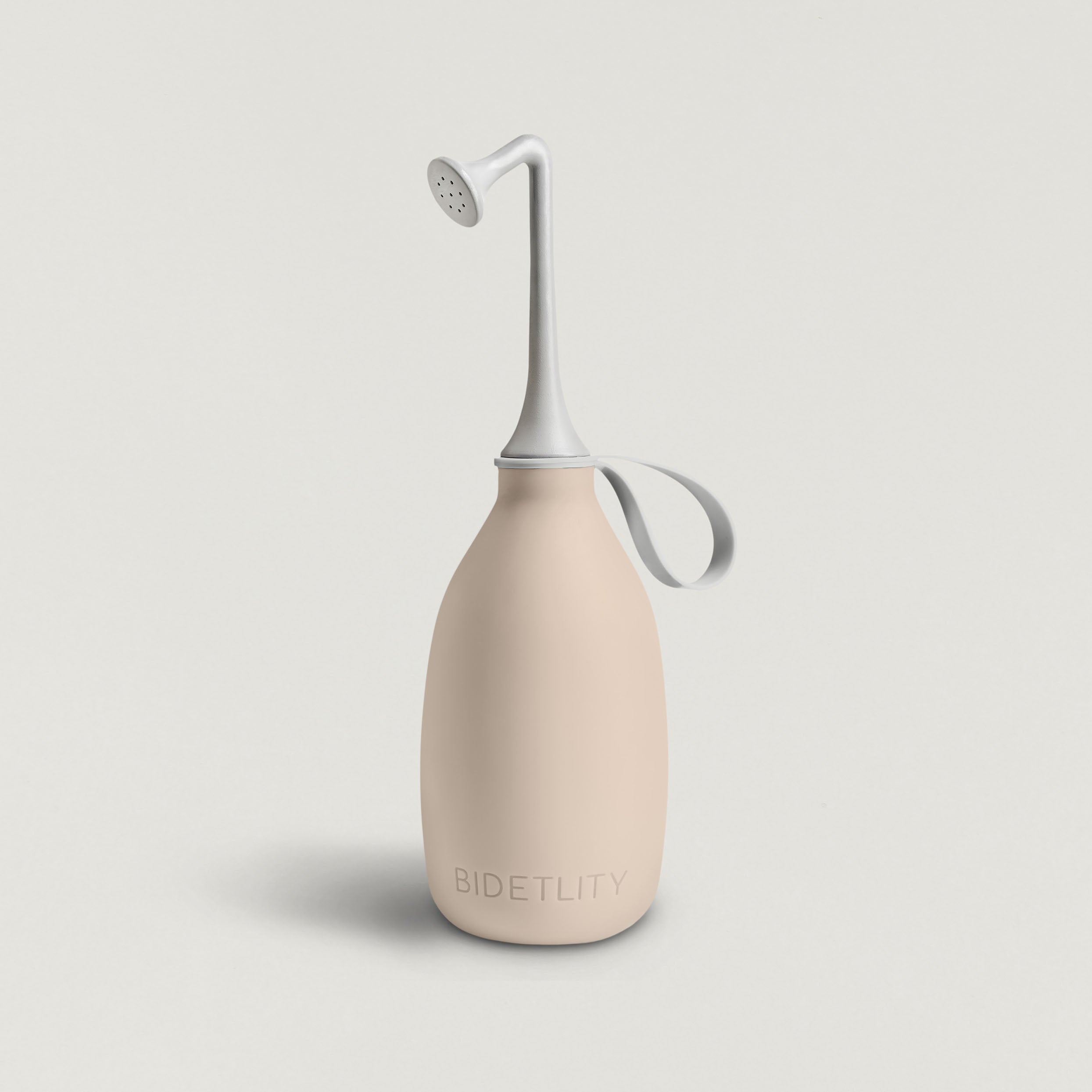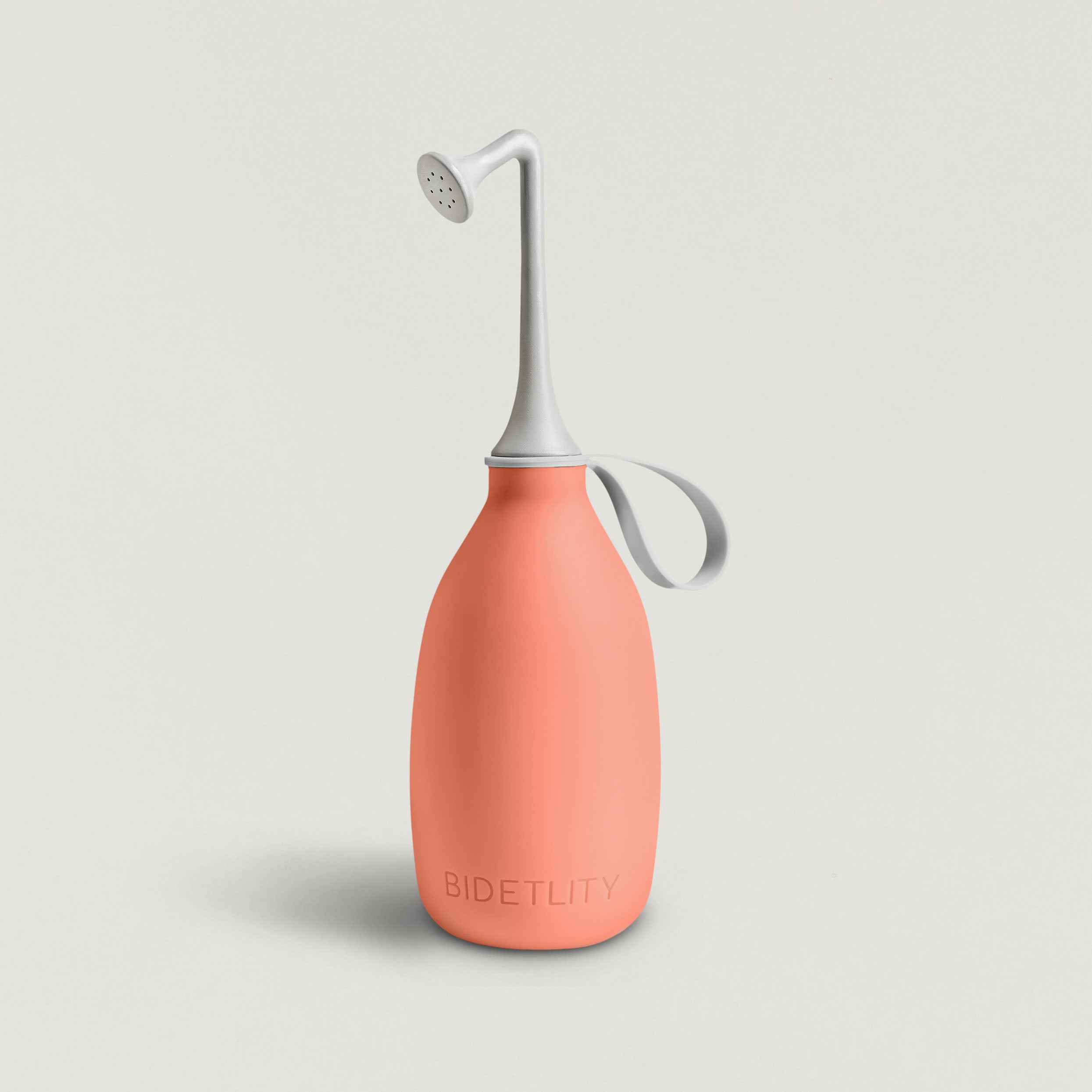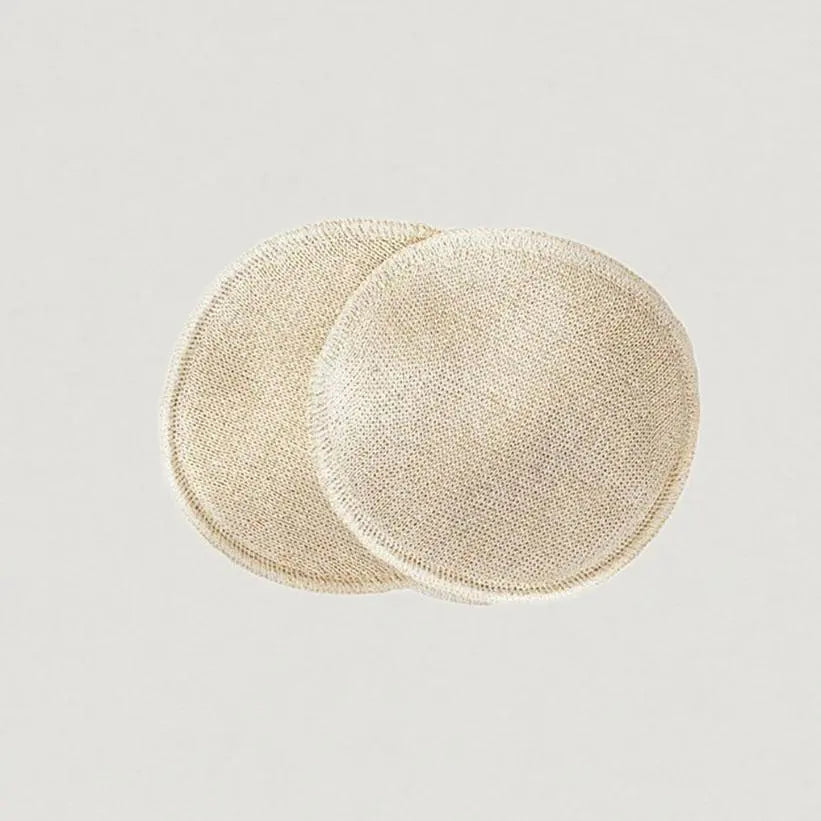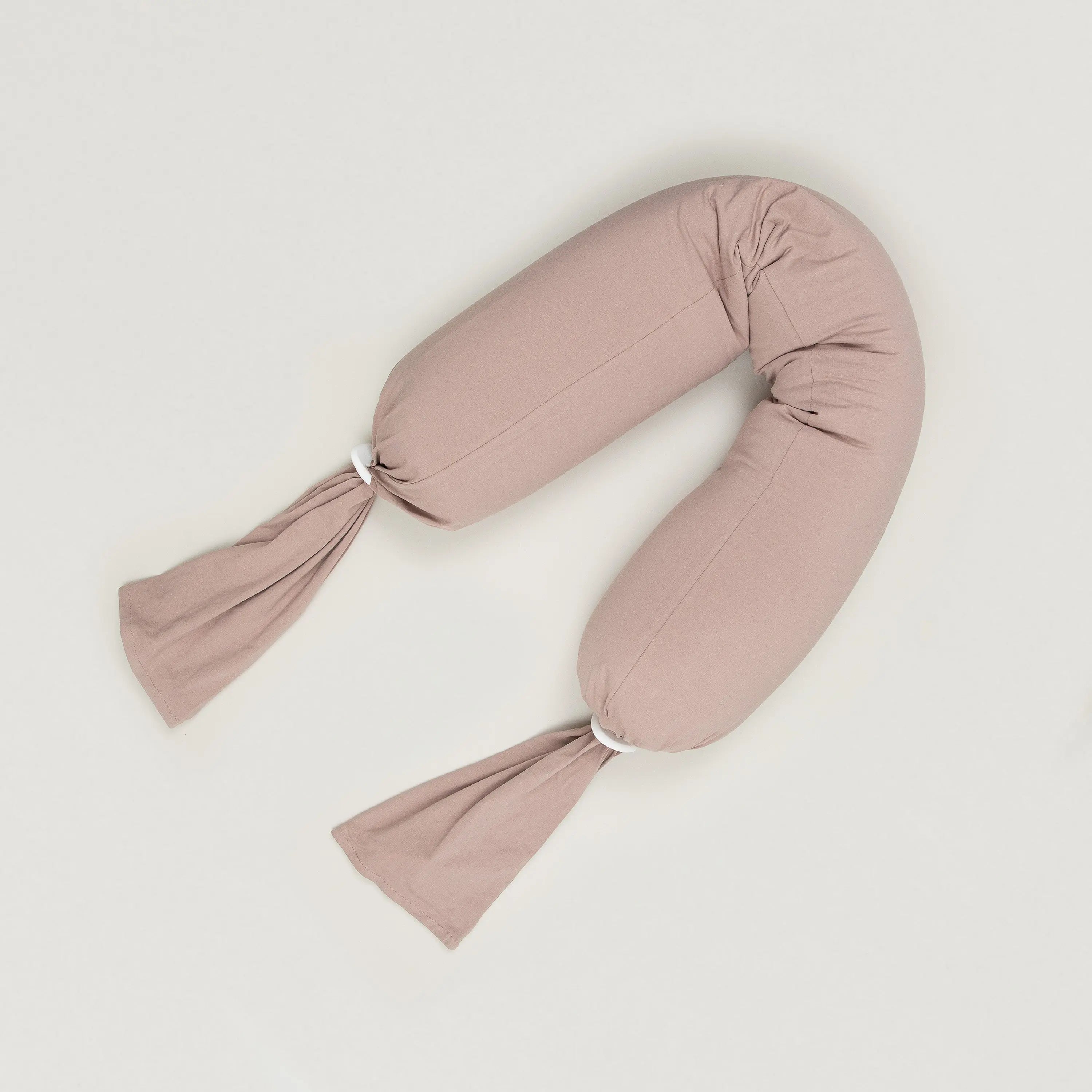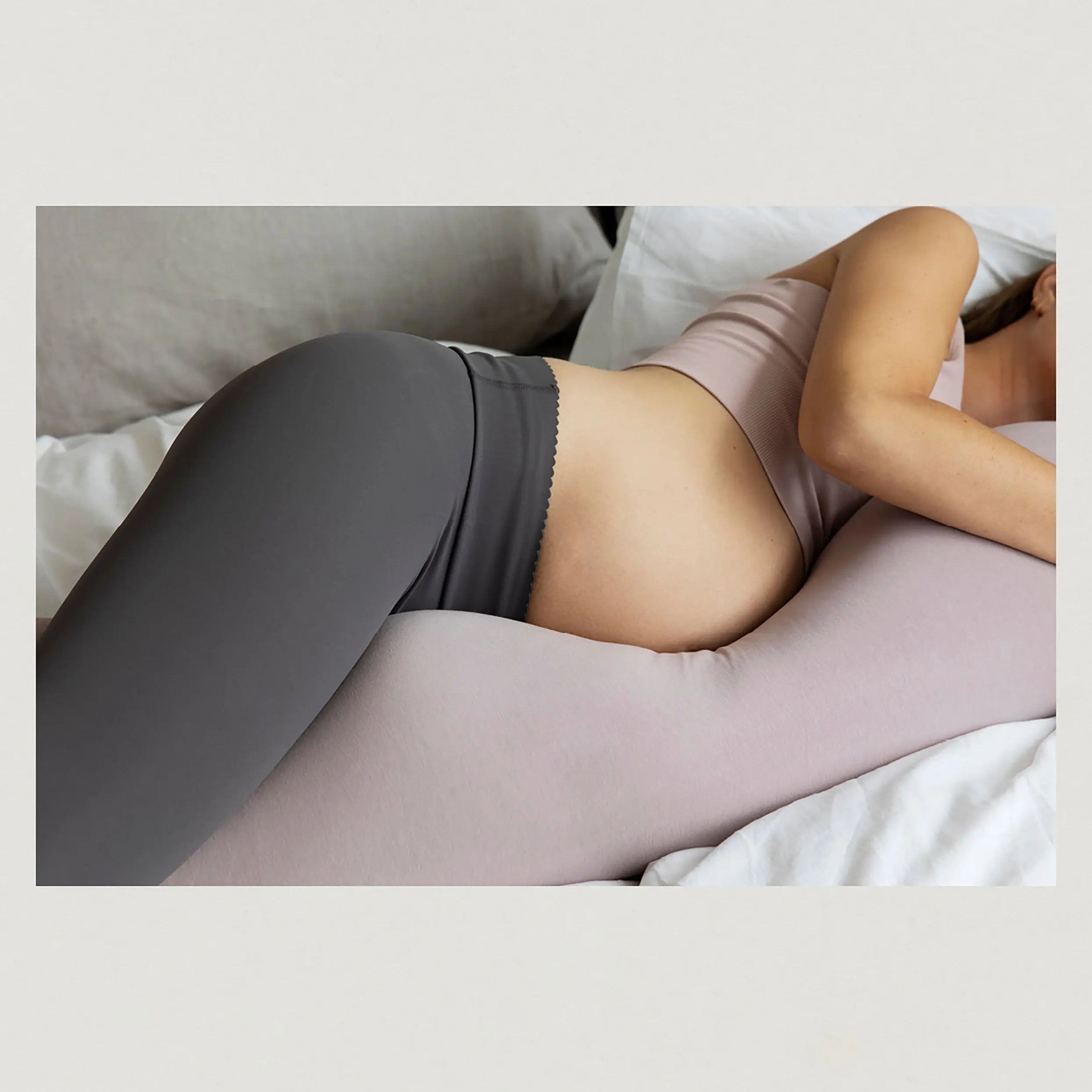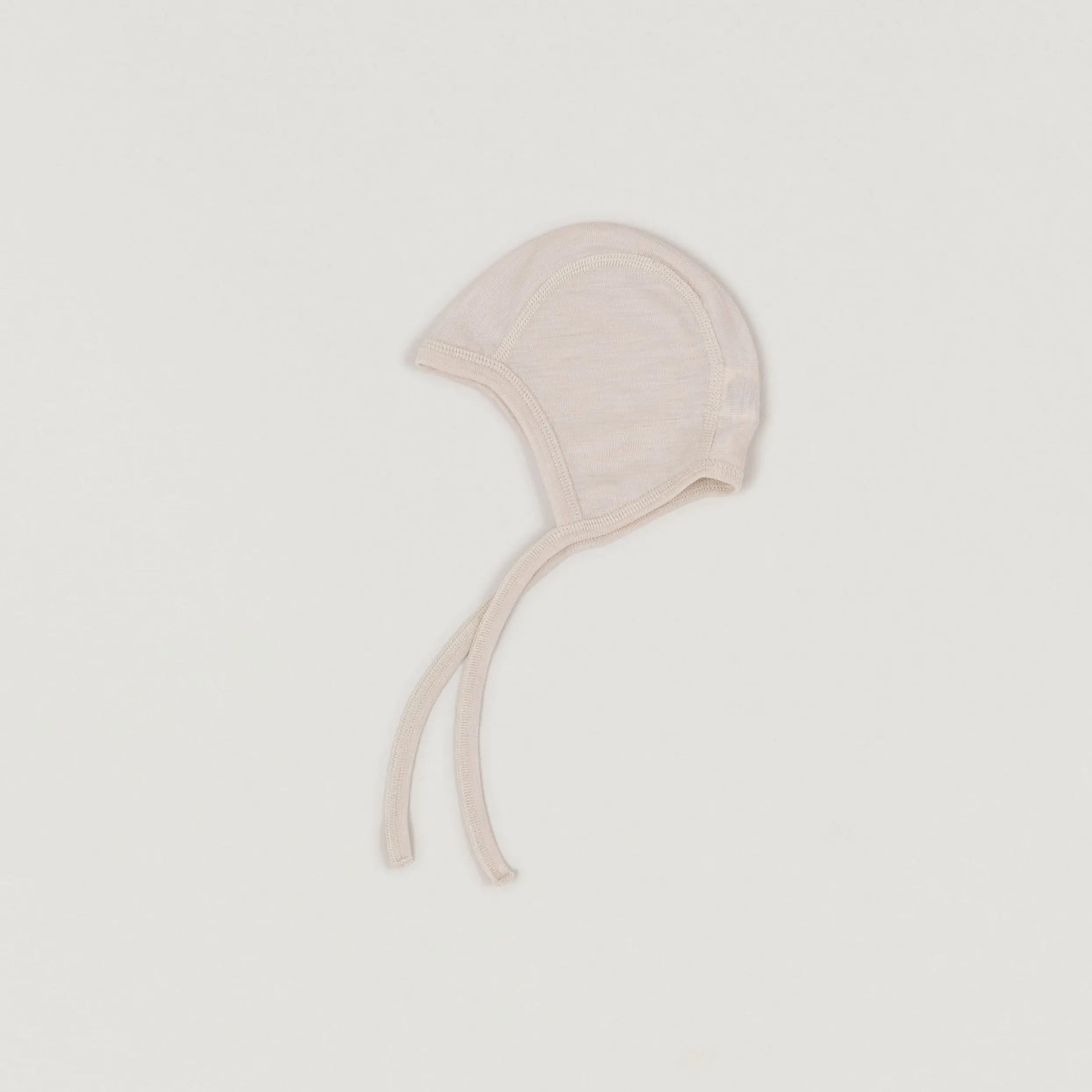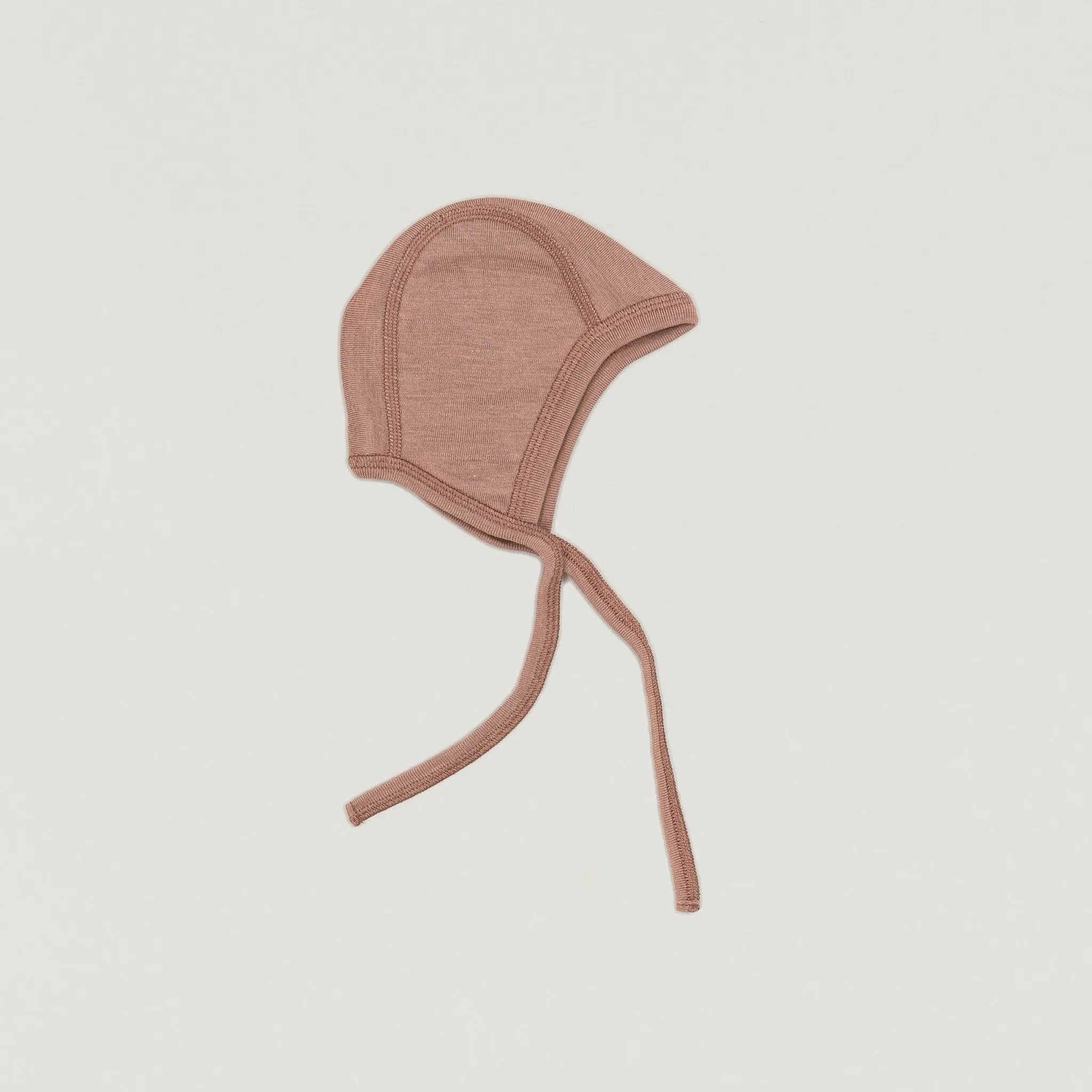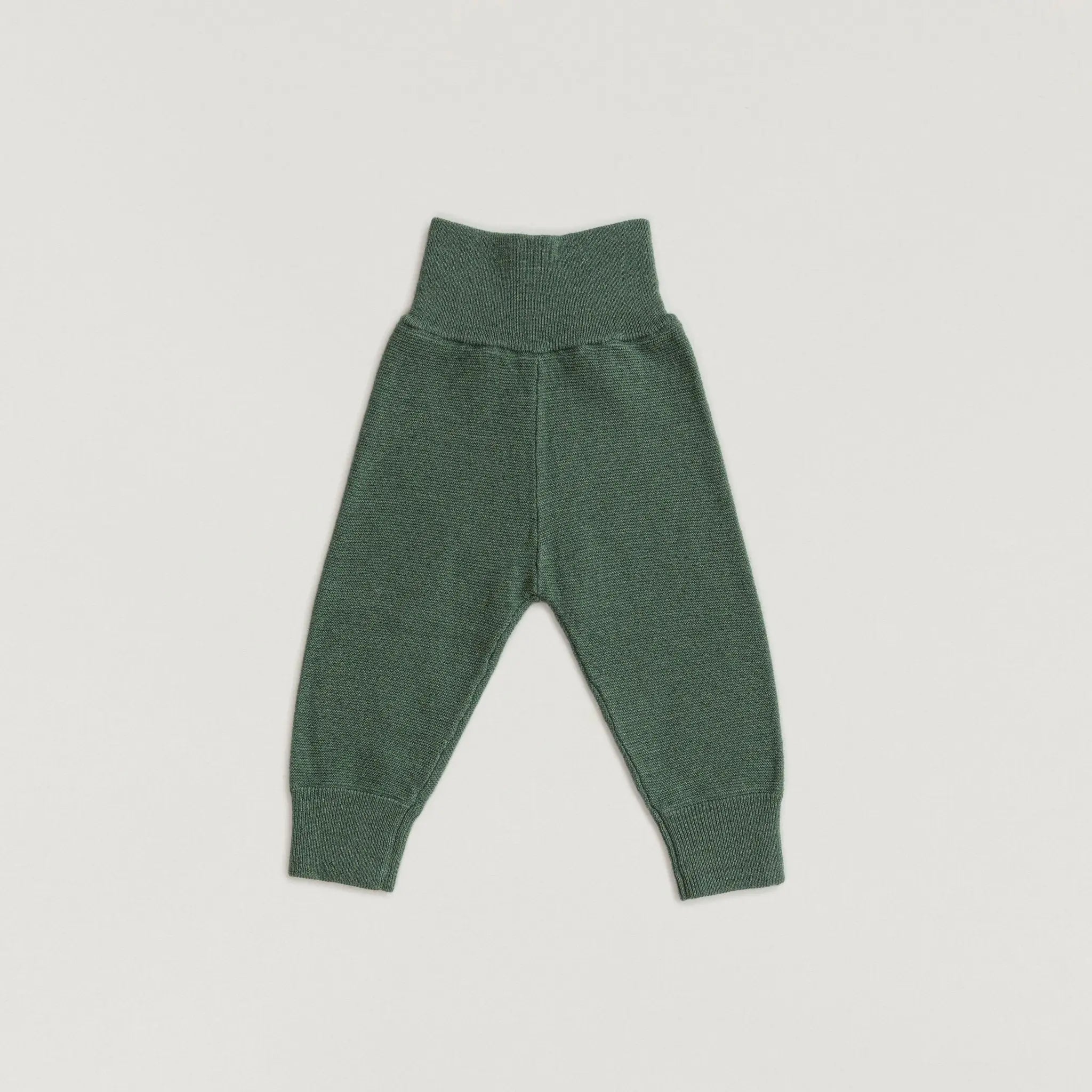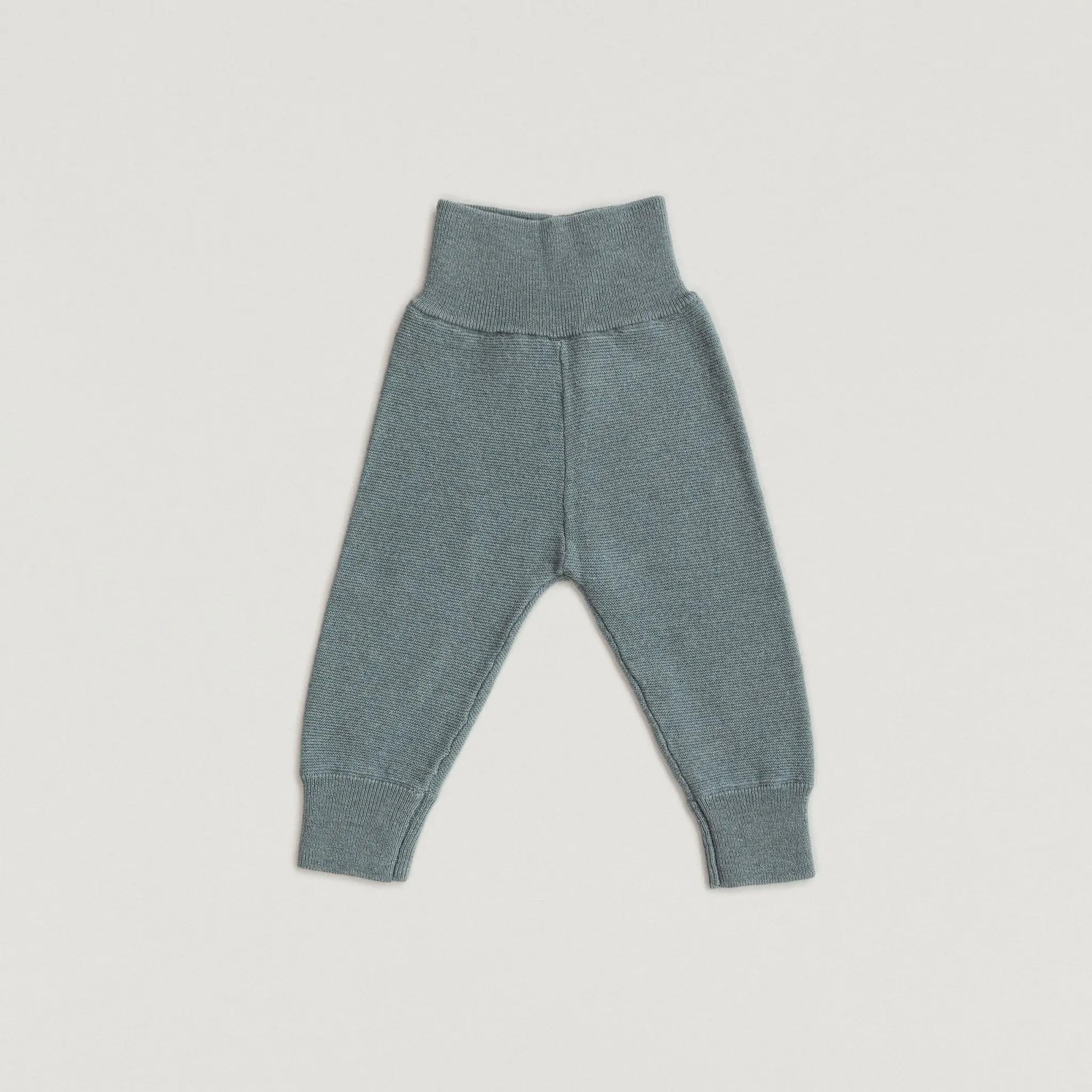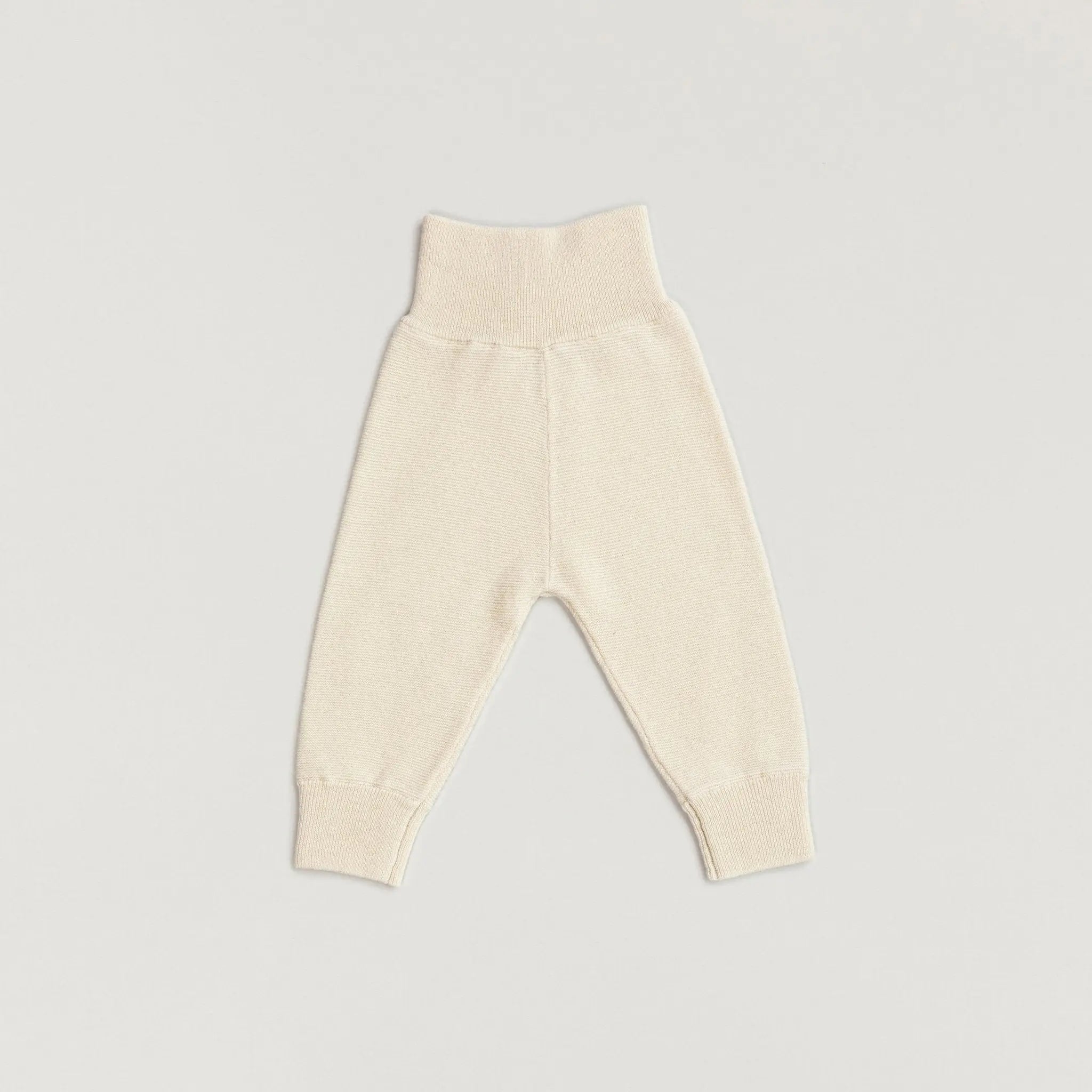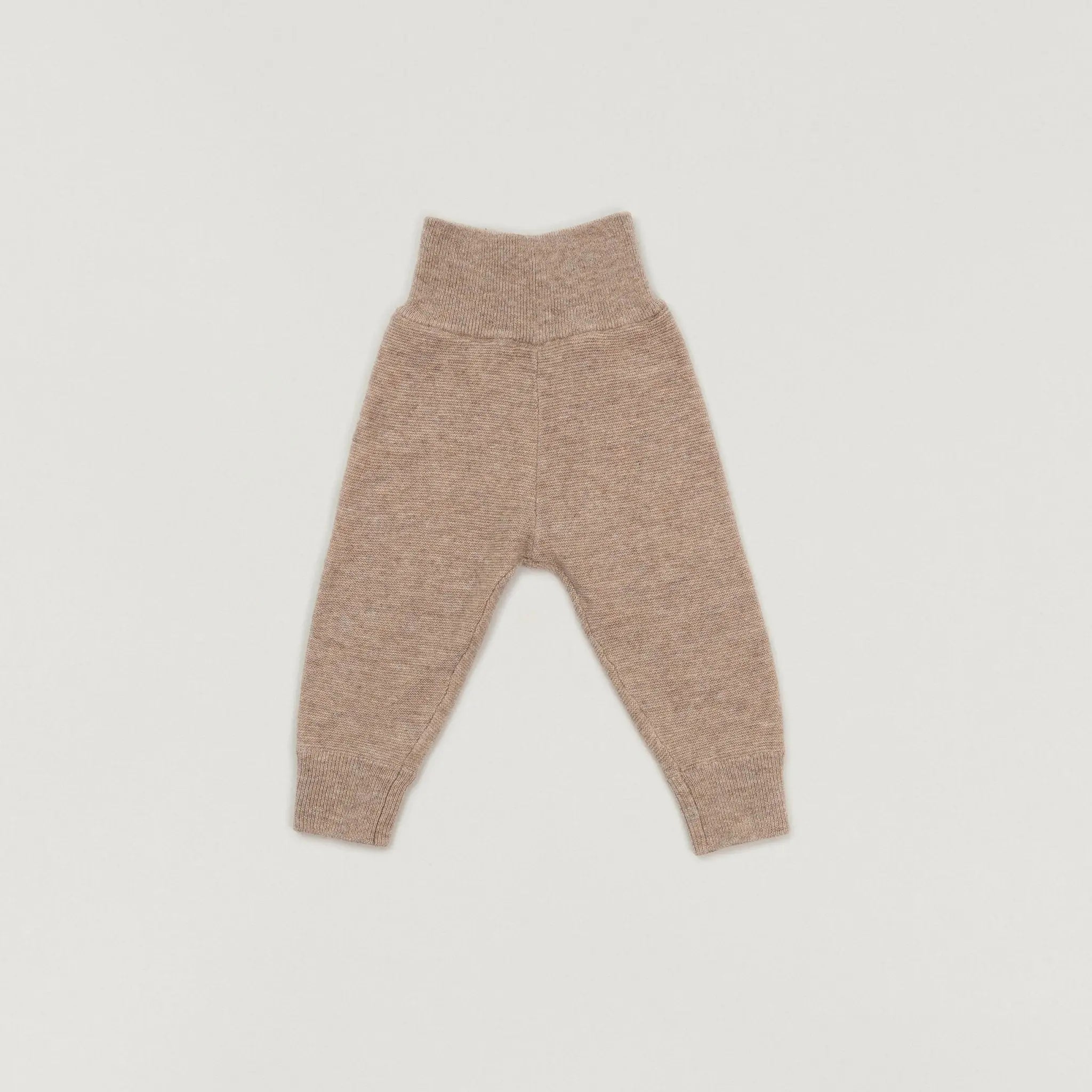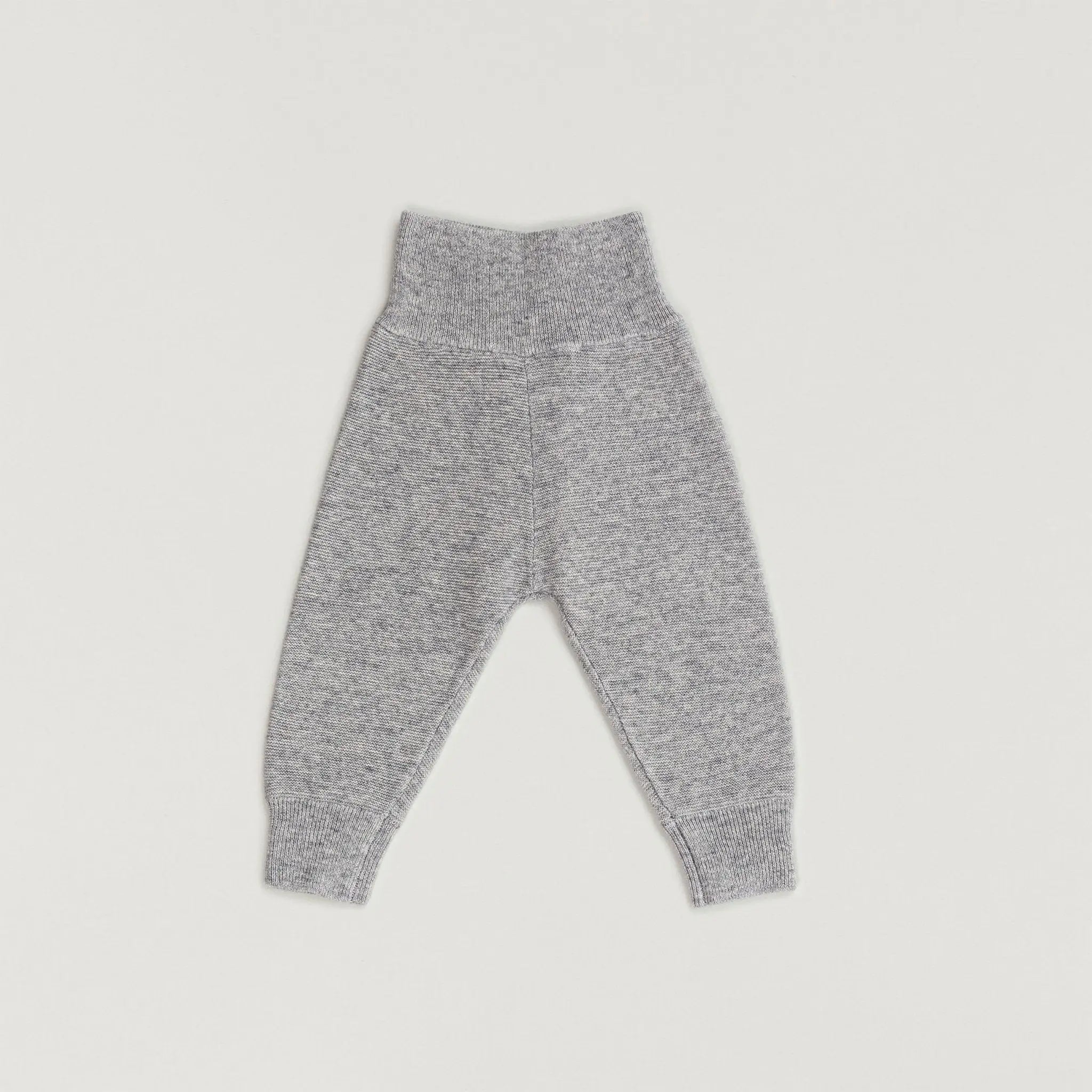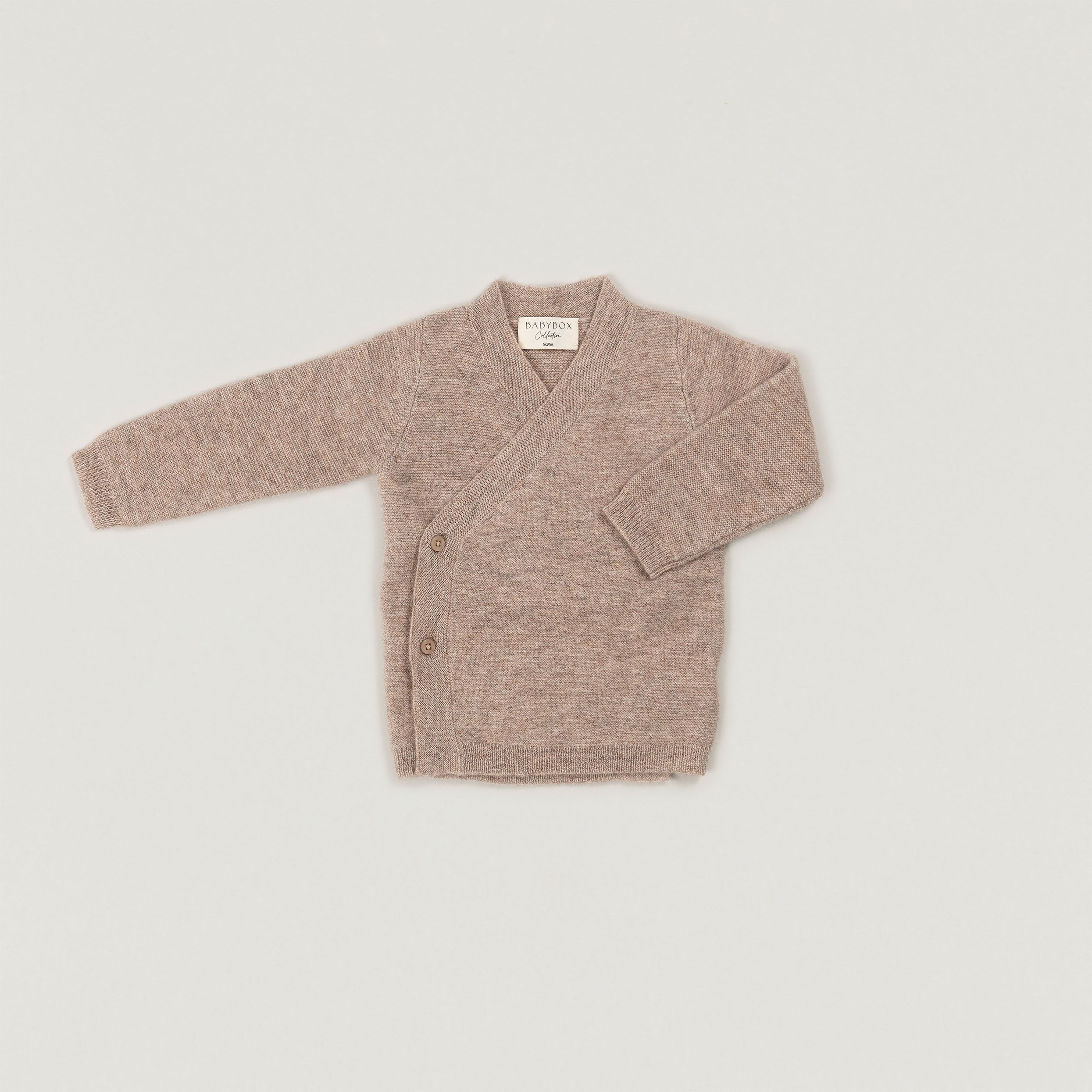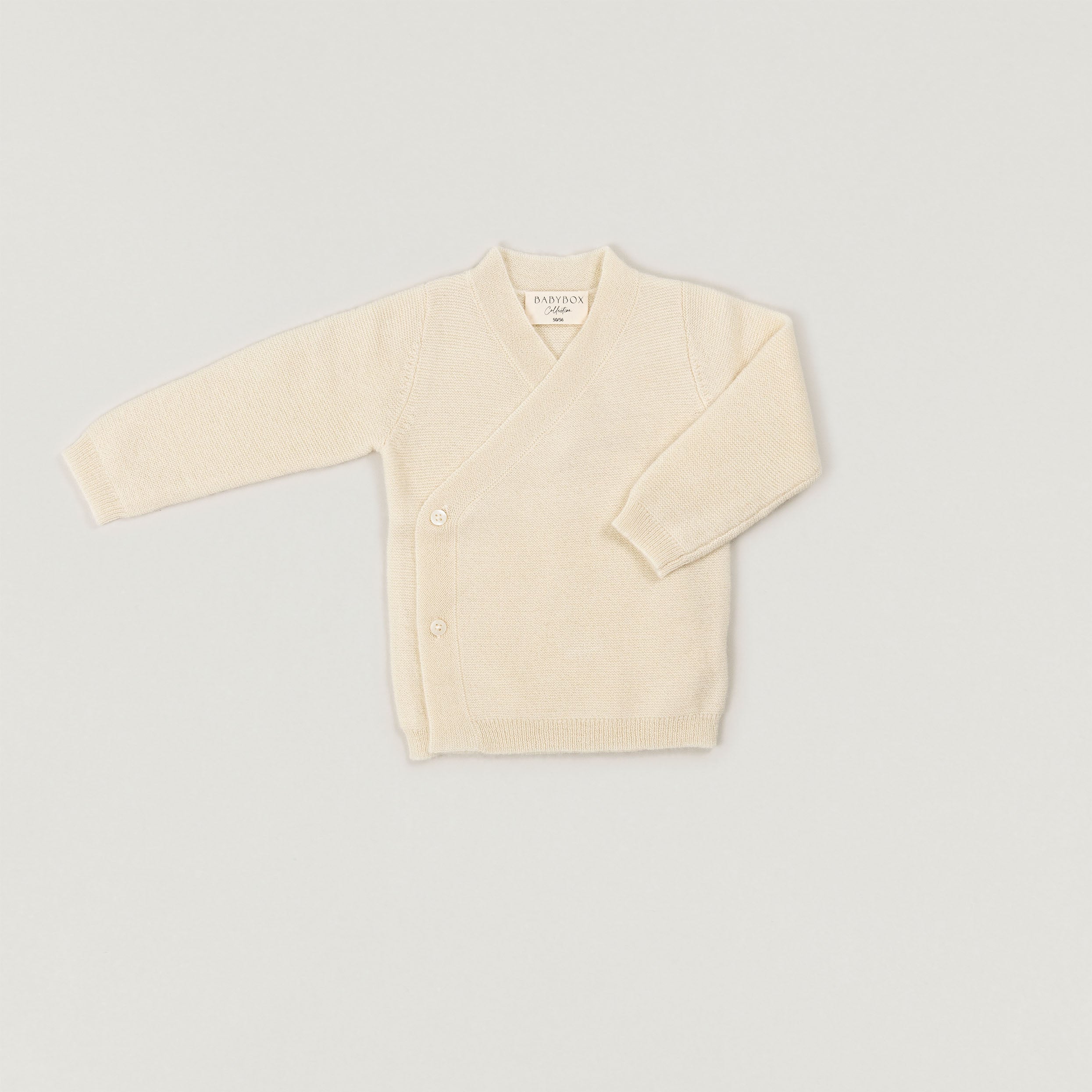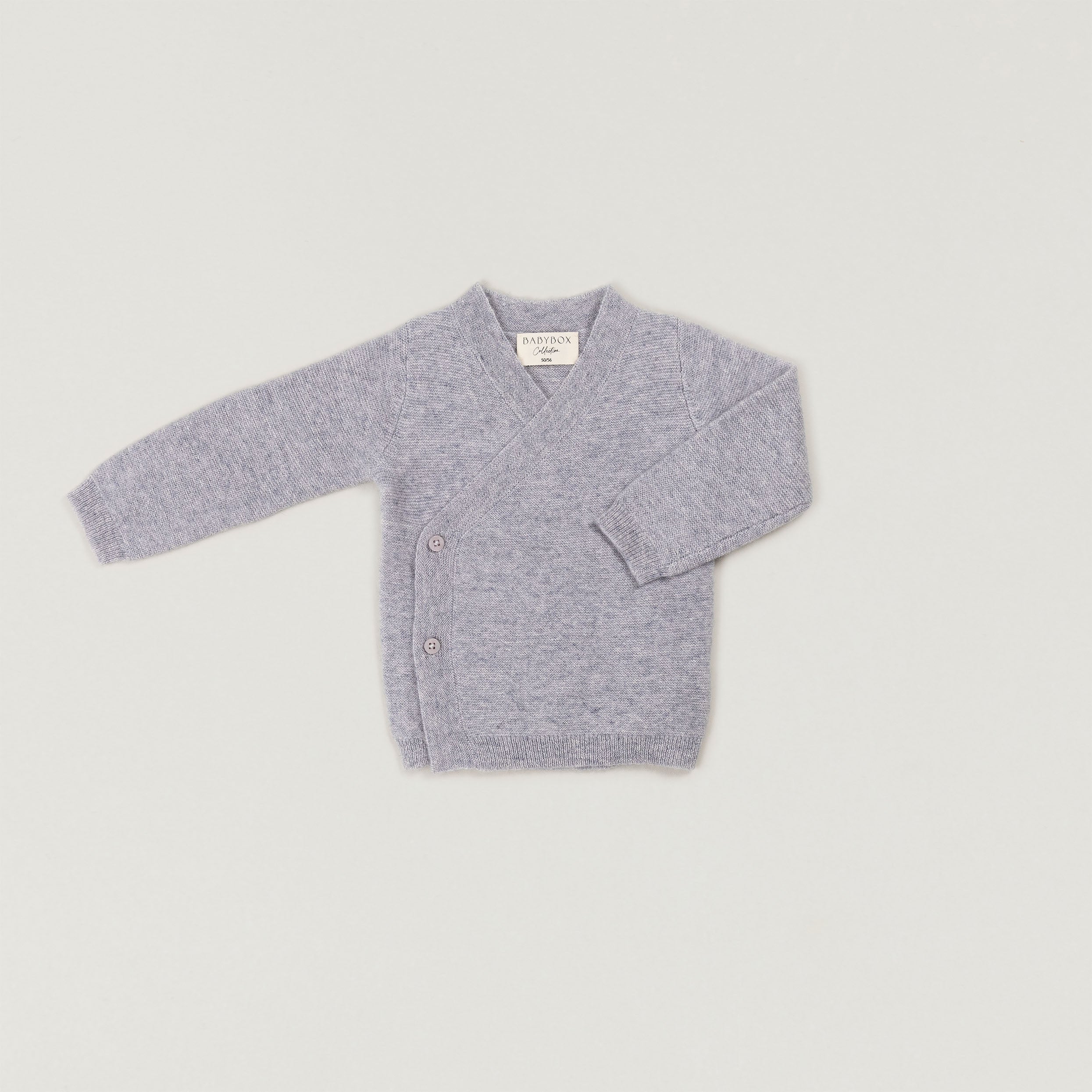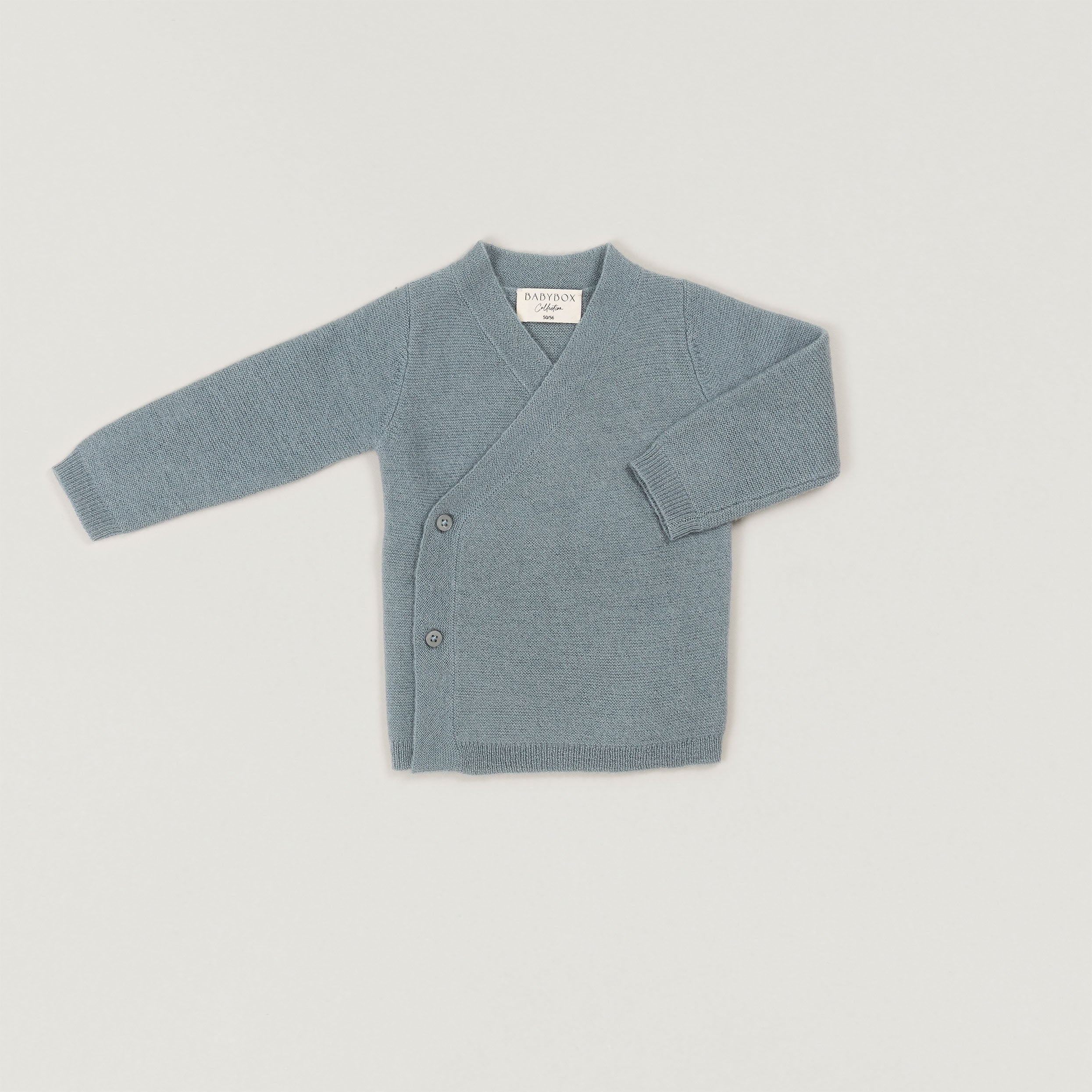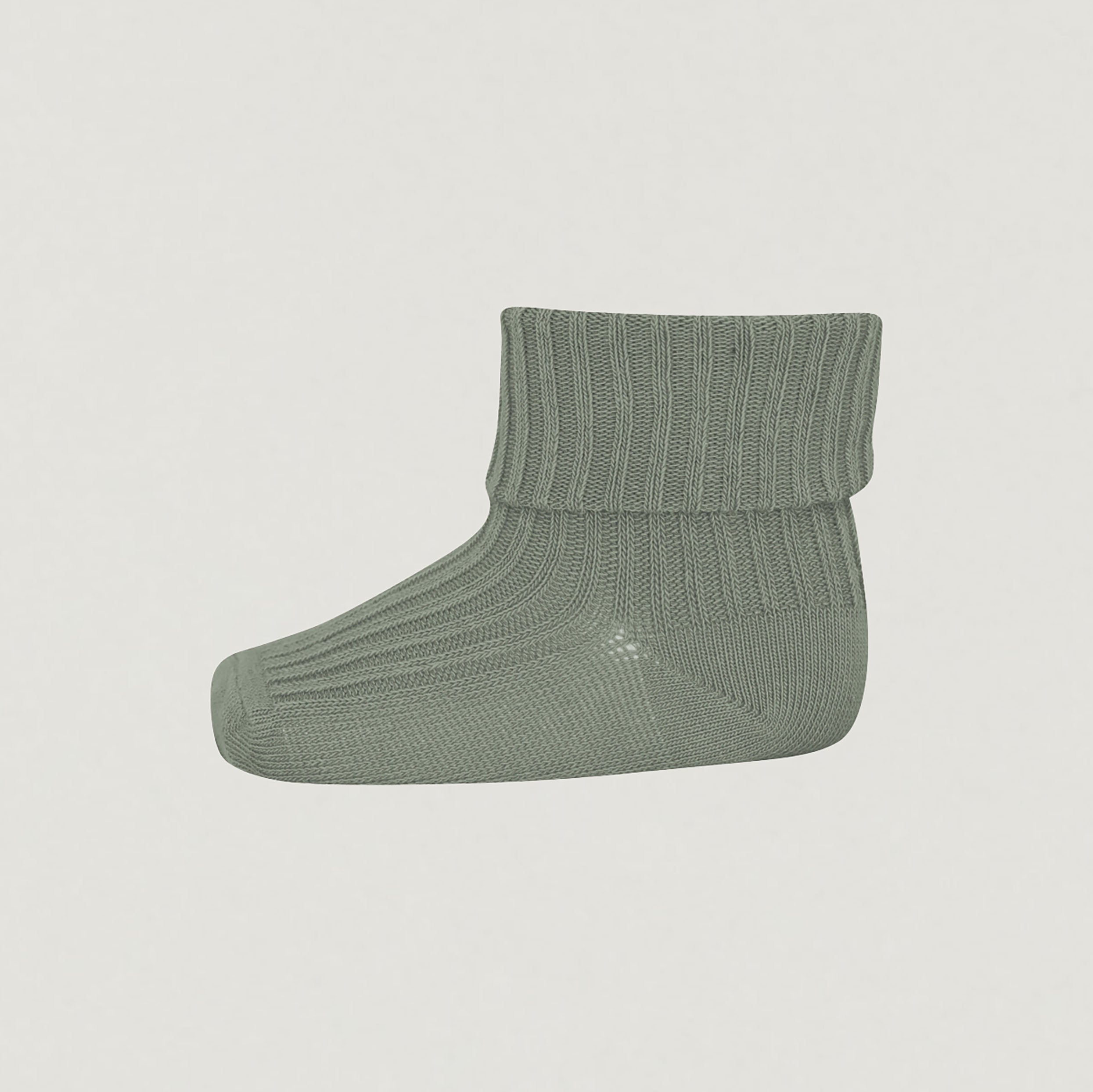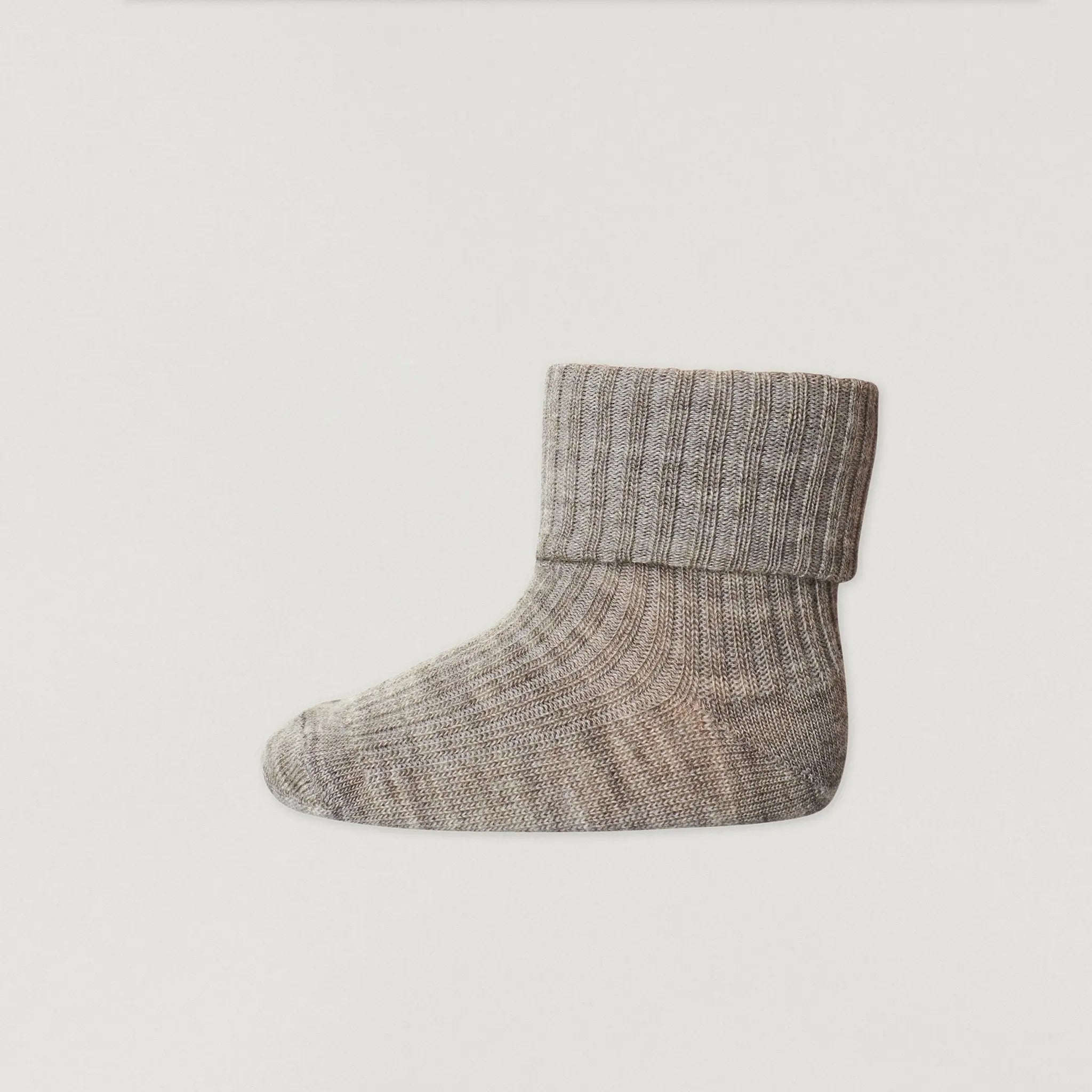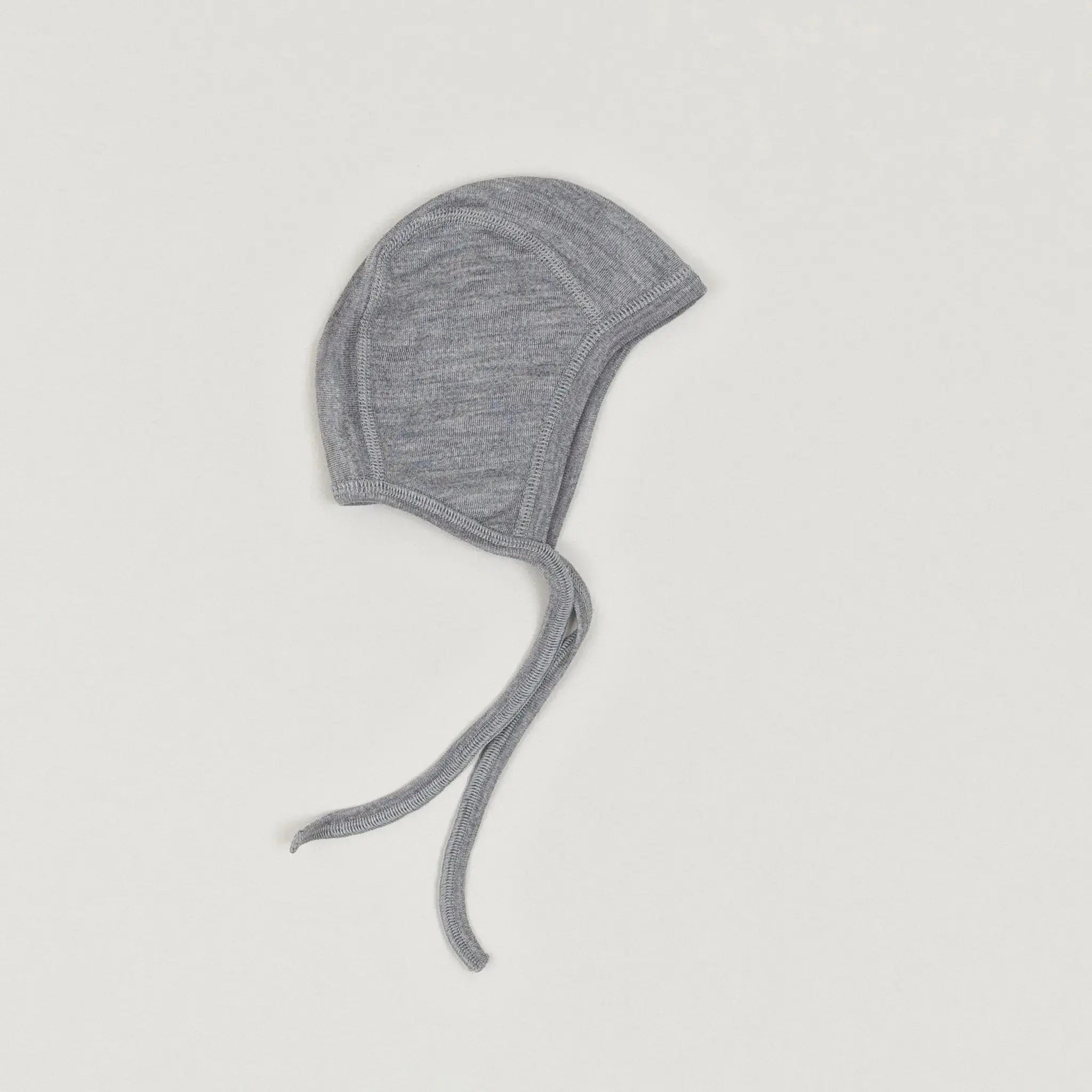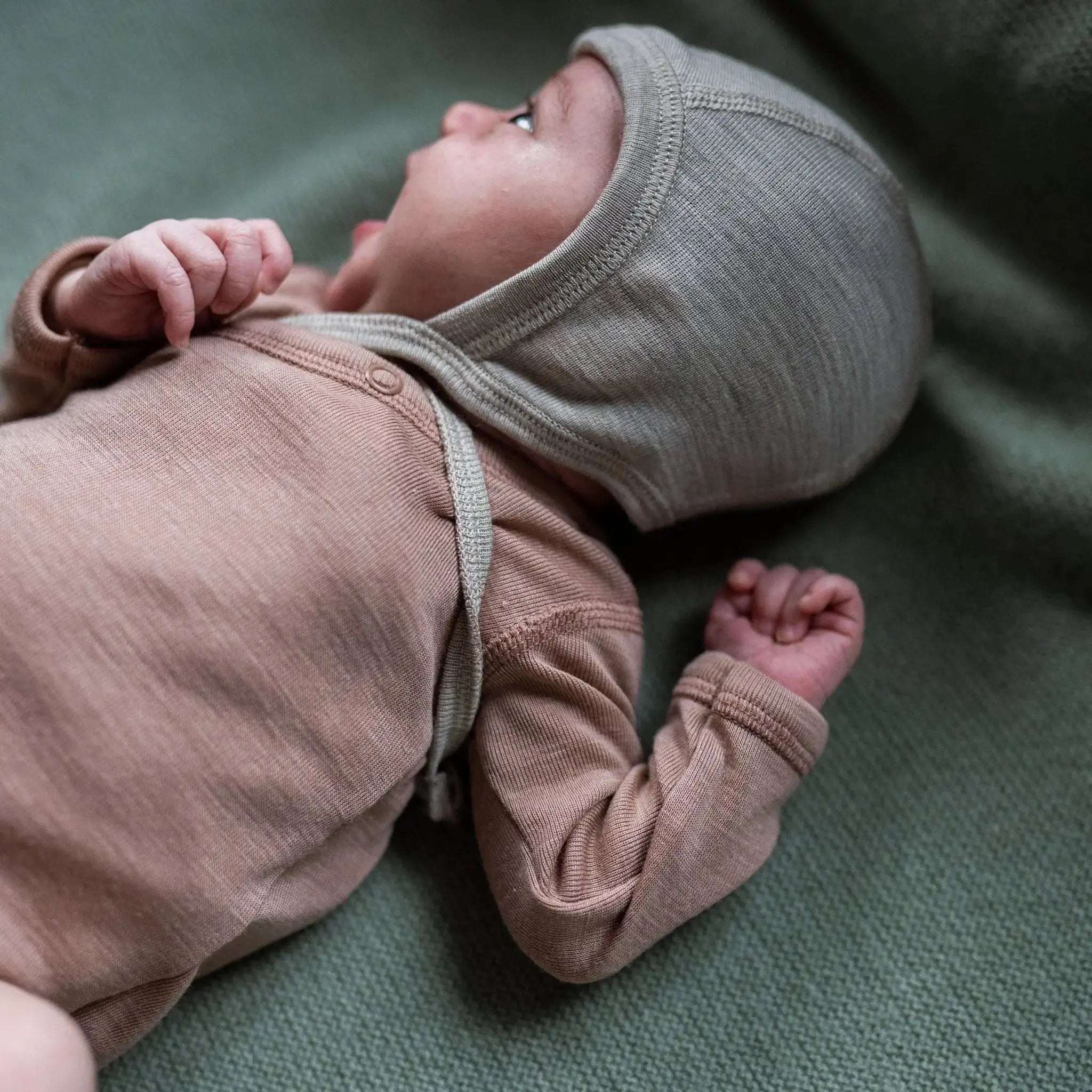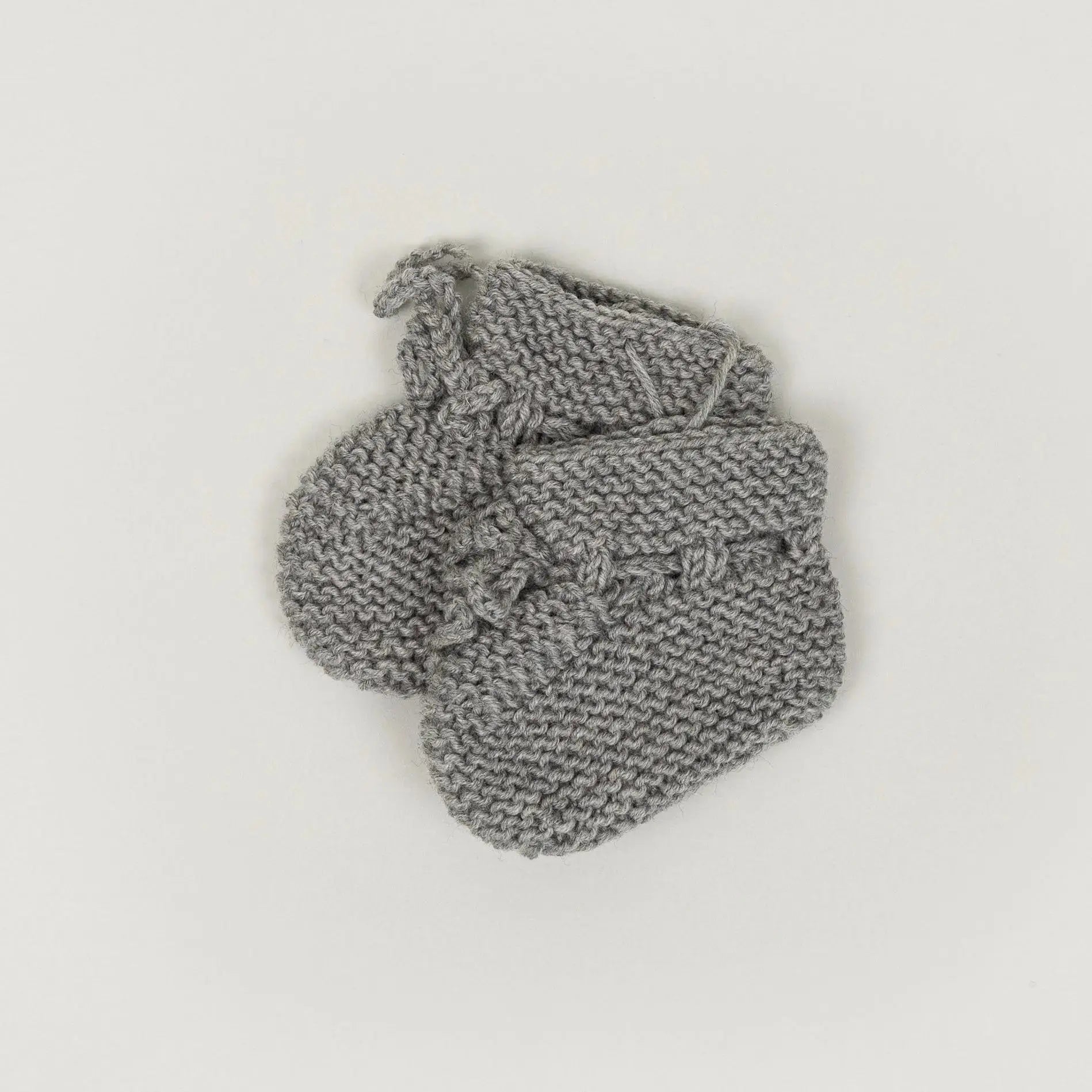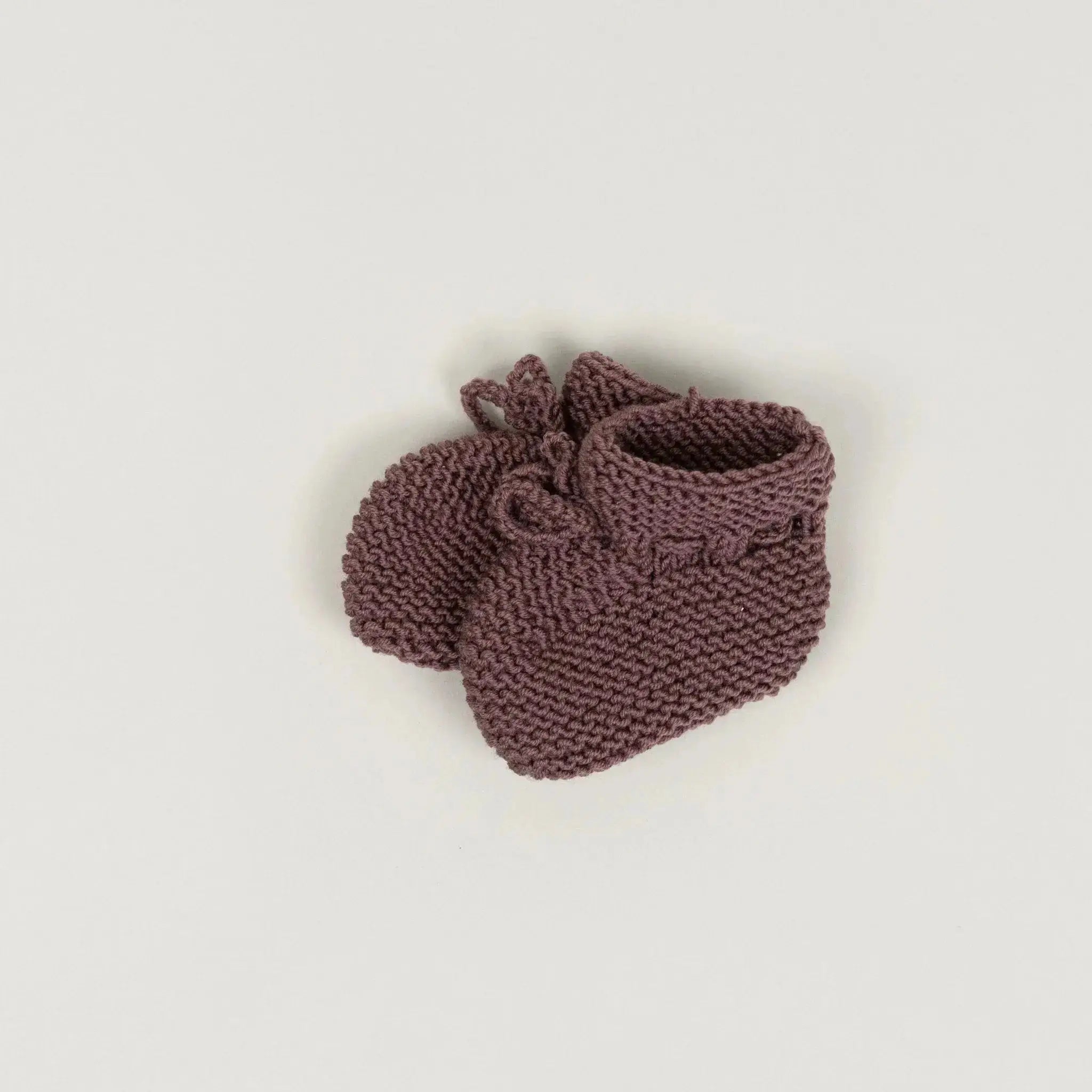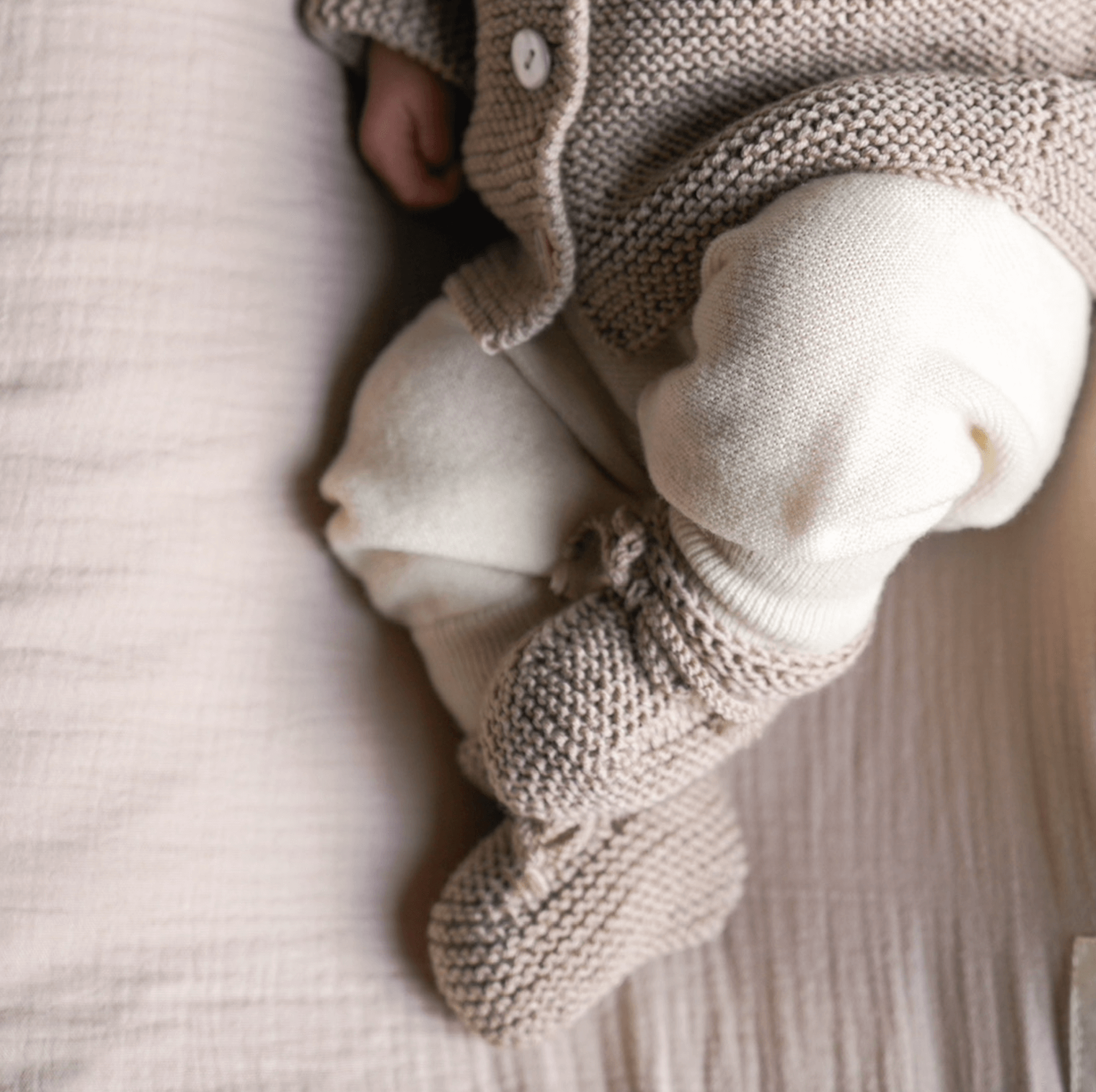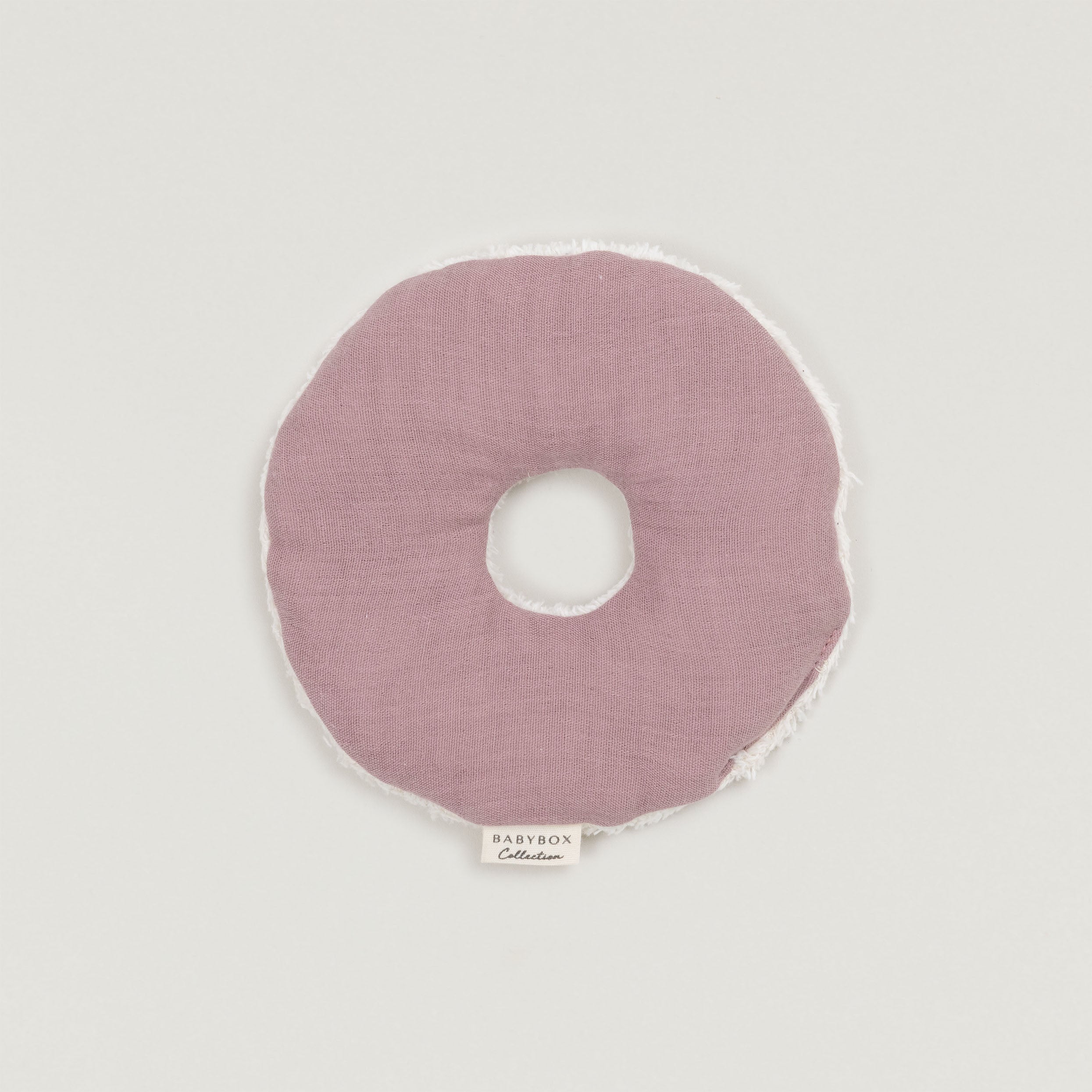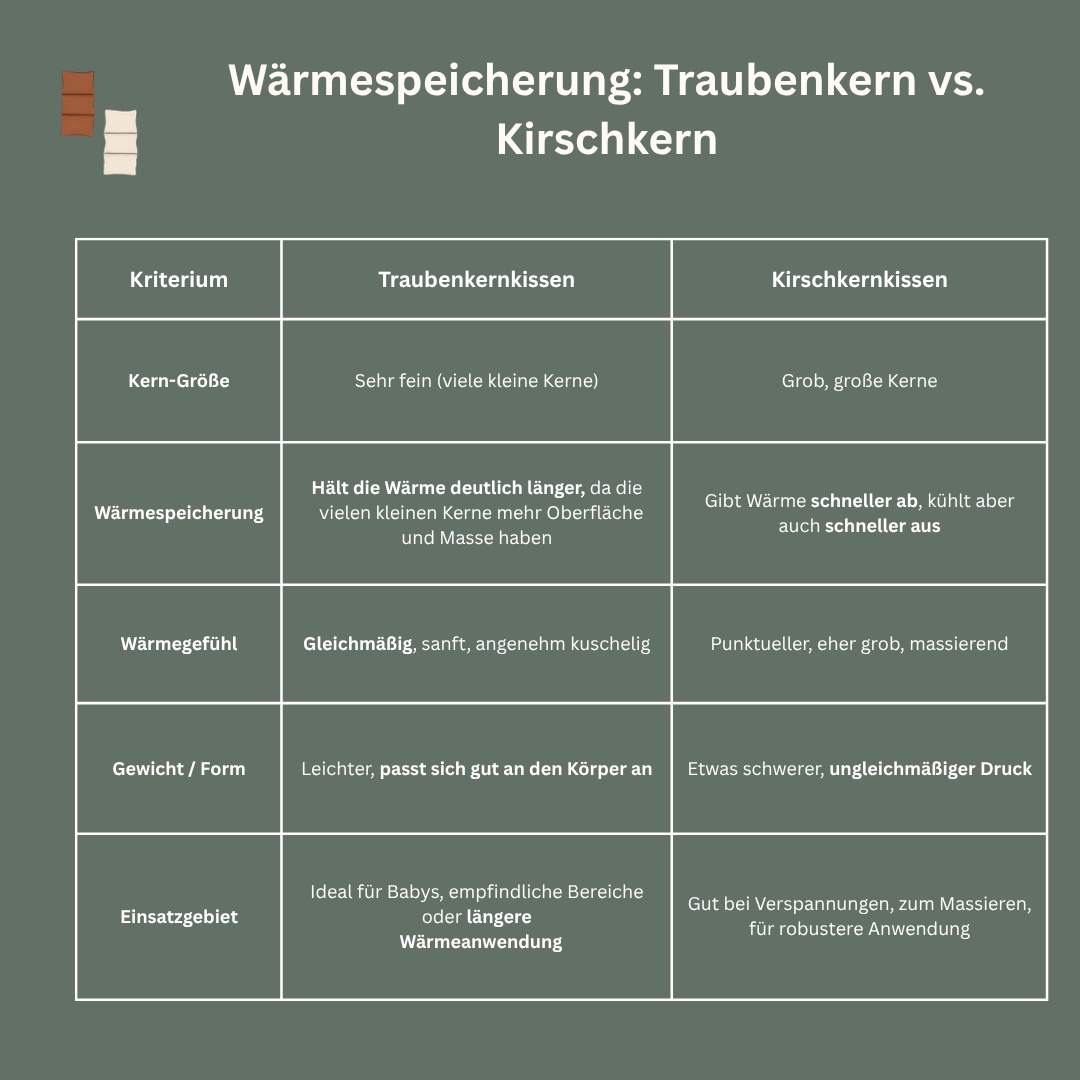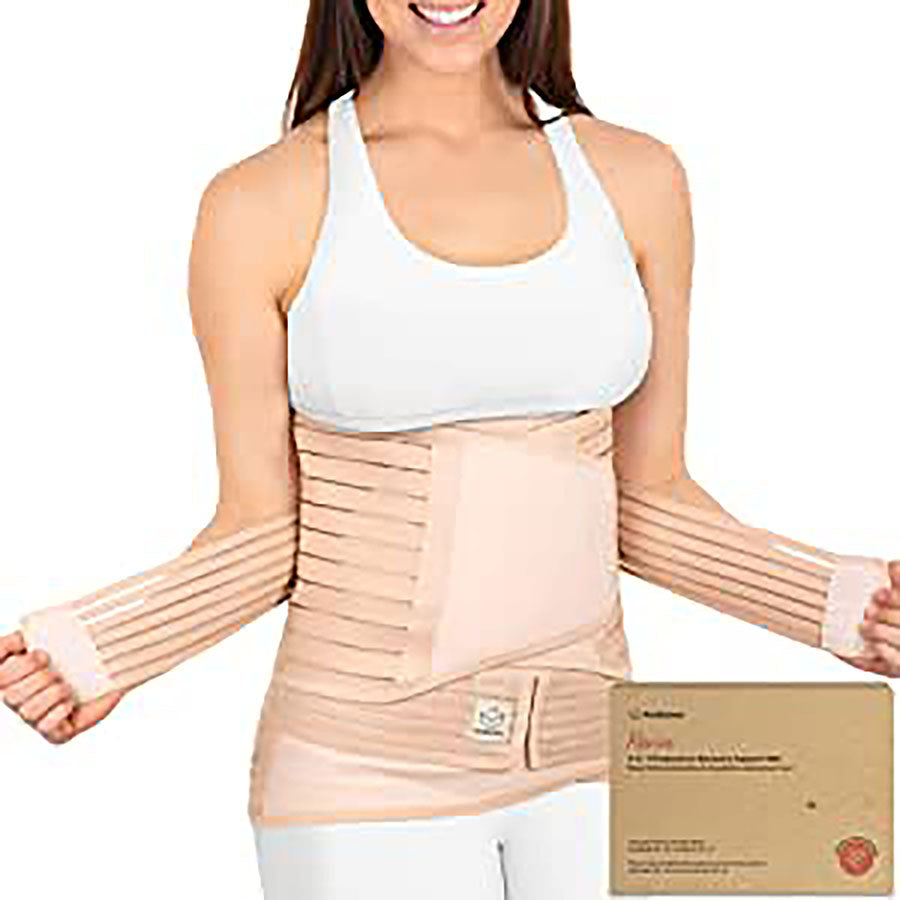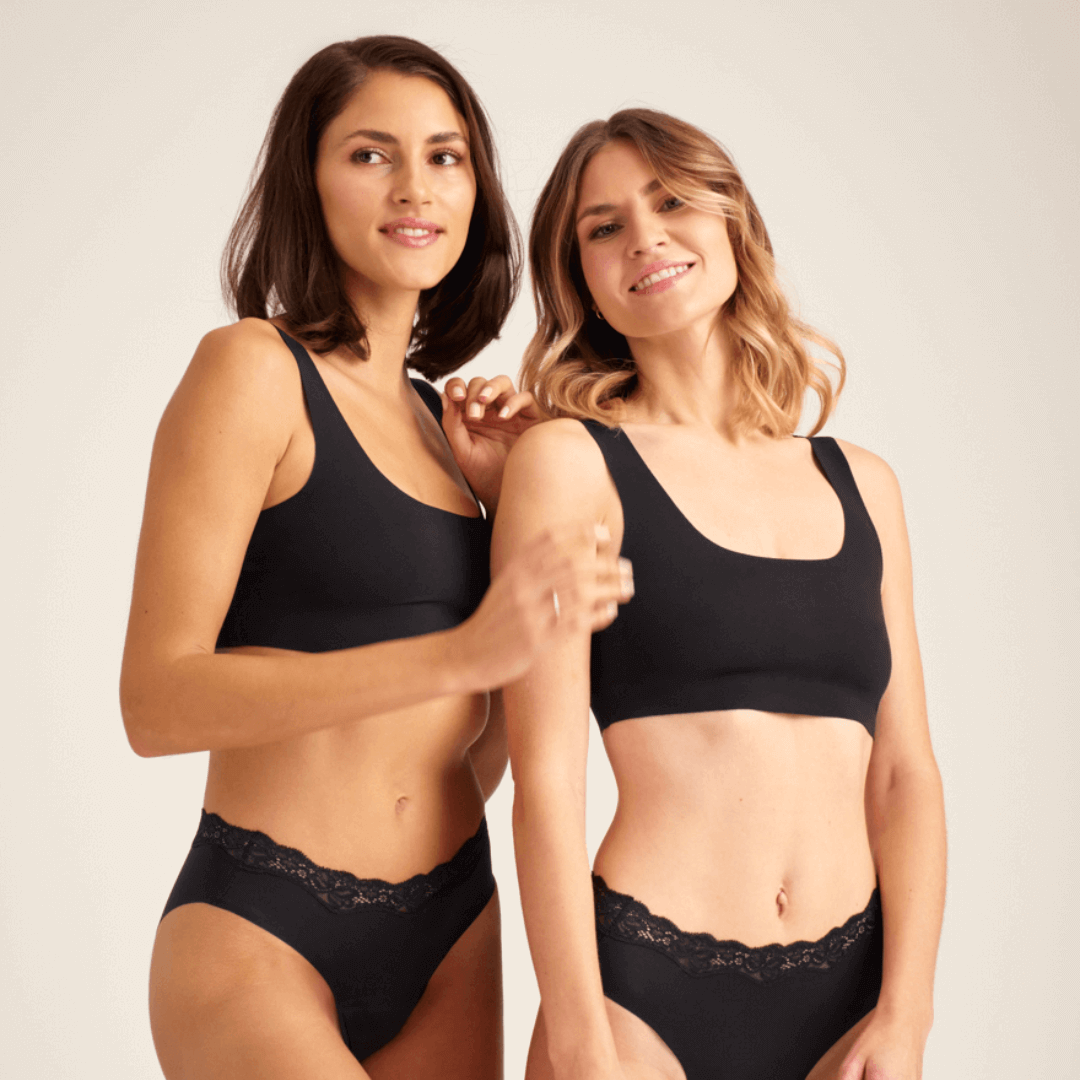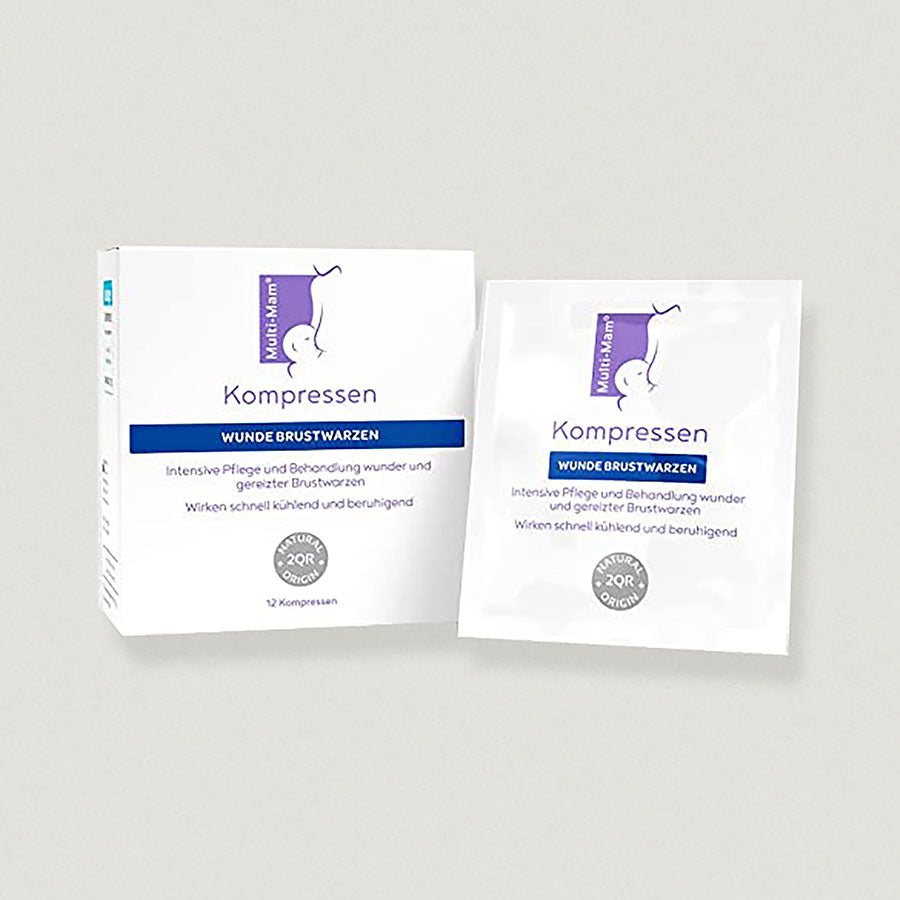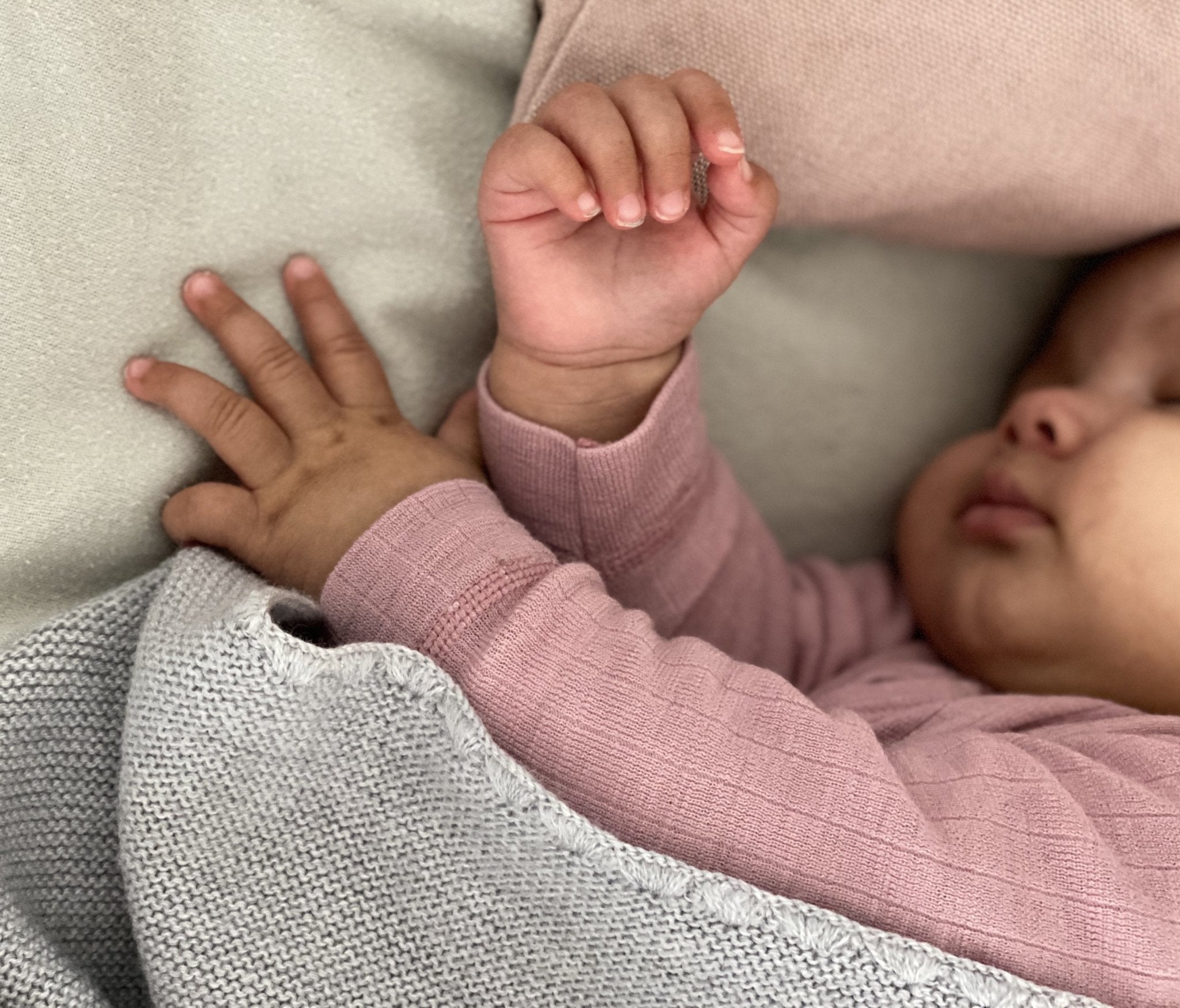Packing the perfect hospital bag is a matter of taste: You don't have to turn up in the delivery room armed with a large suitcase and literally anything you could ever need for every scenario. You really don't. Of course, it can make sense to have your own things with you to make childbirth and especially a potential stay in the hospital a little more comfortable - it all depends on what you feel most comfortable with!
Basically, there are only a few things whose absence would make you feel really stuck in the hospital and which should not be missing in your hospital bag: your maternity card and your health insurance card.
That's about all that's really necessary to have with you - because, in a pinch, the hospital will have everything else.
Of course, since we know from our own experience how useful a checklist can be when the nest-building instinct slowly kicks in, we have put together a list of things that can be really good to have with you. All items are mom and midwife approved!
Whether or not you will actually need them all is something that you will only know when the time comes, but with this list you'll be on the safe side.
Incidentally, it can make perfect sense to pack two bags at once (and ideally not at the very last minute): one with delivery room essentials, and a bag for a stay on the maternity ward if you cannot or do not want to give birth as an outpatient.
First things first, here's what you can safely leave behind:
- Pads, nursing pads, and disposable underwear for you, as well as diapers and, if you're up for it, even clothes for your baby. No need to haul these along, they'll be readily provided during your stay.
- Towels: Delivery rooms are well-stocked, but having your own in the maternity ward can be a nice touch.
- Baby's car seat and all the bells and whistles: Trust us, you won't need this in the delivery room (and lugging it around during labor might earn you some puzzled looks). It's totally enough to use it when you're heading home from the hospital.
In the delivery room
- Comfy attire: A cozy top that feels good to you and that you’ll want to wear during labor can be great. A longer shirt can be handy for added comfort, especially if you're not wearing any underwear after giving birth.
- Bra or bikini top: If you prefer not to be completely bare during a bath, a bra or bikini top can be a nice option. But if you're all about that natural feel, go for it!
- Comfortable slippers, preferably washable ones like flip flops or slides, as your shoes might get a bit messy when your water breaks or during labor.
- Favorite lip balm: The deep breathing you'll be doing can leave your lips feeling parched. Having some lip balm on hand can keep them moisturized.
- Heating pads or hot-water bottles: While hot-water bottles might not be allowed in most hospitals due to burn risks, you could bring your own cherry pit pillow for comfort.
- Freshening up: A thermal water spray or a refreshing oil roll-on (like Strength Oil Roll On from Mama Matters) can provide a lovely pick-me-up.
- Washcloth: Your birth partner can use this to cool you down or wipe your skin during labor.
- Birth towel: A red towel to wrap your baby in right after birth. It can help your baby transition smoothly into the world and soothe their breathing.
For your stay on the maternity ward
1. Lightweight robe or kaftan: Great for throwing on so you can feel comfortable and a little bit dressed within a moment's notice.
2. Postpartum clothing: Especially if you're staying a few extra days after a c-section, it can be really good to have some extra clothes with you:
- Comfortable undershirts and nursing bras (e.g. from ooia )
- Leggings (e.g. from The Mama Set- You can even wear these without your baby bump; when folded over they provide extra support for your stomach after delivery)
- Shorts or loose pants for sleeping
- Warm socks
-Comfy underwear that you don't mind getting stained – period underwear (like those from ooia) can be a great choice for later during childbirth. Maternity underwear or disposable panties are also suitable, especially in the initial stages.
3. 3-Phase Adjustable Belly Band- These are useful after both vaginal birth and C-sections, to provide support and stability to your postpartum weakened core – they're also helpful to help ease intense afterpains or to support a significant rectus diastasis (separation of the rectus abdominal muscles).
4. Soft toilet paper or wipes: It sounds silly, but it's really worth it because hospital toilet paper is the last thing you want to use on your sensitive perineal area after giving birth. A special bonus: the wet wipes from Lillydoo, made from 99% water!
5. Intimate care : It's incredibly beneficial, especially for birth injuries -to rinse yourself off with pure water, some calendula essence, or even our favourite sitz bath from Bahnhof Apotheke during your first trips to the toilet after giving birth
6. Thin blanket: What applies to toilet paper also applies to blankets – having your own soft, lightweight blanket can really make your stay more pleasant
7. Toiletry bag: Having your own toothbrush, personal creams, and necessary cosmetics can make you feel comfortable. It's essential to avoid strongly perfumed products as they might irritate your baby. Additionally, packing care products for both you and your baby is important.
Care products for mom and baby
1. Mama Matters Recovery Oil Spray : You can use this on your sensitive perineal area after childbirth
2. Sitz bath from the Bahnhof Apotheke Kempten: This is great to for postpartum use and is also perfect for real baths and sore baby bottoms
3. Calendula Essence by Wala: You can also consider using it as a gentle perineal rinse as an alternative or addition to the sitz bath. Diluted on a pad, it's a real comfort that aids in healing. Plus, it's versatile and can even be used later for your baby's umbilical care.
4. Almond oil from the Bahnhof Apotheke
5. Mama Matters lip balm , if it's not already in your hospital bag
6. Multi Mam compresses for irritated nipples
7. Livella's silver nipple covers : so good to have, especially for longer stays and those initial breastfeeding problems!
8. Comfrey ointment from the Bahnhof Apotheke Kempten: Use this as a wound ointment for for really anything on mom and baby - e.g. scraped vulva lips or sore spots on your baby
Clothes for your baby
1. Appropriate attire for after delivery, or at least a comfortable Going Home outfit:
- Wool & silk wrap body in size 50
- Schlüttli or wool and silk cardigan in size 56
- Wool & silk Leggings or trousers in size 56
- Newborn hat made of wool silk in size 34cm
- Wool socks in size 15/16
- Babybox handmade shoes in size 50/56
- Outdoor clothing depending on the season for the journey home
2. Baby blanket made from wool, yak, and cashmere, or just plain cashmere- Consider having one! It's even better if it carries your own scent, so you might want to keep it in your bed during the last few weeks before giving birth.
3. Nursing pillow or a comfy pillow: Can be cozy to use when you start breastfeeding, or even to use in the delivery room while resting (but beware, it can get dirty quickly there too!)
Documents
1. Maternity Passport
2. Health insurance card
3. Valid identity cards and birth certificates (original or certified copies) of both parents: Bring these, as they are needed to register your baby’s birth, which you can do in most hospitals/clinics on weekdays in person at the registry office. You might also need your marriage certificate or alternatively, an acknowledgment of paternity and Declaration of Custody (it’s good to clarify this before the birth with the youth welfare office or notary). Keep in mind that if your hospital/clinic does not have a local registry office, you’ll need to register the birth at the registry office corresponding to your clinic instead of where you live.
Tip: To keep everything organized, consider bringing a folder to prevent any documents from flying around or getting misplaced.
Legal Tips & Tricks
If you're interested in learning more about the required documents, feel free to refer back to our article on legal tips.
Technology
1. Mobile phone and charging cable
2. Camera
3. If you like: Bring a small, portable box for music or headphones if you want some privacy during delivery
Important for your partner
1. Comfortable clothing: Delivery can take a long time, and he or she is usually involved in assisting with the various birthing positions - for water births it is also worth bringing extra underwear or a swimsuit with you
2. Likewise, bring (washable/comfortable) slippers
3. Can't hurt: toothbrush for well-being
4. Their own bag filled with the basics needed for a stay in a family room: It's a good idea to inquire about the availability and costs of these types of rooms at your chosen clinic in advance!
Snacks
1. Pack a variety of snacks: Even if you don't have much of an appetite during childbirth, having snacks on hand can provide you with a source of energy. Decide in advance what you want!
2. It’s important for your partner or companion to eat regularly! They need nourishment to stay strong and remain physically present with you.
3. Throw in a few healthy bars, fresh fruit, or even a yogurt, a squeezable pouch, or your favorite chocolate - whatever you feel like!
4. Water bottle with straw: This type of bottle allows you to have a drink in any birthing position
5. Snacks for after delivery: This is also really good to have on the maternity ward - unfortunately the food choices in hospitals is still really bad
But don't worry: you can now have good food delivered at most postpartum wards.
Nice to have
1. Consider bringing a notebook to jot down important memories after or during the birth.
2. A scented room spray can create a pleasant atmosphere in the delivery room. Look for options like the "delivery scent" from Bahnhof Apotheke.
3. Don't forget lavender or childbirth oil. These can be useful for massages during childbirth. In a pinch, the almond oil from your toiletry bag will work too.
All set? Now you're prepared! As a general suggestion, aim to pack your hospital bag around the 36th week of pregnancy. If you're expecting twins, it's a good idea to have it ready a bit earlier, around 28-30 weeks. Just to be safe!
Checklist
Hospital bag
All info at a glance can be found in our downloadable hospital bag checklist.
Login here to download the checklist.Shop for the Hospital bag
Our recommendations
